The 22nd century
Continued environmental destruction, rapid growth of transhumanism, and major developments in space travel all mark the 22nd century.
Practically all the world's energy comes from either fusion or renewable sources now. Global warming shows no signs of abating however, due to positive feedback loops that were triggered in previous decades.
Artificial intelligence - having begun to merge with human intelligence in the previous century - now surpasses it, reaching whole new levels of cognitive and intellectual capability. Though lacking the raw emotions and subtle traits of organic human minds, the sheer depth and power of AI begins to profoundly transform the course of history. High-level decisions by governments and corporations now come directly from these sentient machines. There are vast swathes of virtual employees everywhere, and heavily automated systems in every industry. All of this makes for vastly improved speed, efficiency and productivity.
Science advances so rapidly that it would exceed the comprehension of 20th century observers. The most significant developments are in quantum physics - but wholly new fields also emerge that were completely untapped in previous decades. Femto-scale engineering is among the many practical applications resulting from all this.
Developments in space during this time include numerous permanent, manned settlements on the Moon and Mars; regular manned trips to the gas giants; the first asteroid mining operations; and the first probes to Alpha Centauri. Space tourism booms during this period, with trips to the Moon's surface becoming relatively commonplace for ordinary citizens.
2100-2149 Contents
2100
Extreme droughts are affecting nearly one-third of the planet
Global average temperatures during the 21st century soared by over 6°C. Positive feedback loops triggered the melting of Siberian permafrost, in turn releasing vast amounts of methane - a greenhouse gas more than 20 times stronger than CO2. Among the many environmental effects has been a substantial increase in droughts.*
• Moderate droughts, affecting up to 25% of the Earth's surface in 2010, now affect up to 50%.
• Severe droughts, affecting up to 8% of the Earth's surface in 2010, now affect up to 40%.
• Extreme droughts, affecting up to 3% of the Earth's surface in 2010, now affect up to 30%.
Worsening environmental conditions have led to a substantial population die-off, with billions of deaths over the last few decades.** Entire regions now lie abandoned - with agriculture made impossible, once mighty rivers having dried up, and gigantic wildfires engulfing larger and larger areas.
Desalination technology has rescued some countries, but in many others it has failed to meet demand. Efforts to reverse climate change on a global scale, using various geo-engineering techniques, are proving to be insufficient.*

Credit: ilker canikligil
Human intelligence is being vastly amplified by AI
Some regions - such as Canada, northern Europe and Russia - have continued to grow and prosper. Large-scale automation in these countries has led to vast swathes of human employees being replaced by virtual or robotic counterparts. AI systems now occupy almost every level of business, government, the military, manufacturing and service sectors.
Rather than being separate entities, these AI programs are often merged with human minds, greatly extending the latter's capability. For instance, knowledge and skills on any subject can now be downloaded and stored directly within the brain. In addition to basic information and data, this includes a range of physical abilities. A person can learn self-defence, for example, become an expert in any sport, or be taught to operate a new vehicle, all within a matter of seconds.
The world is being transformed by this fusion of people and machines. The vastly greater power of AI means that it has become, at the same time, both master and servant to the human race.
The benefits of this human-AI merger require the extensive use of implants, however - something which a significant minority of the population still refuses to accept. Compared to transhumans, these non-upgraded humans are becoming like cavemen - thousands of years behind in intellectual development.* Unable to comprehend the latest technology, the world around them appears "fast" and "strange" from their increasingly limited perspective.*This is creating a major division in society.

Credit: Indiansummer
Nomadic floating cities are roaming the oceans
At the dawn of the 22nd century, many of the world's cities lie partially submerged due to rising sea levels.*Despite some attempts to build flood defences, even famous locations - such as New York, London, Hong Kong, Shanghai and Sydney - have been affected.
With over 10% of the world's population living on coastlines, hundreds of millions have been forced to migrate. However, disruption of inland food and freshwater supplies - caused by drought, disease, war, overpopulation and other factors – means their journeys often end in vain. Some of the worst-hit countries have been plunged into a state of anarchy. Vast uninhabitable wastelands now cover the equatorial regions, with desperate streams of refugees moving from city to city, fighting over what little scraps remain. There is widespread damage to buildings and infrastructure.
In the US, formerly prosperous breadbaskets in the south have been turned into lifeless deserts, while coastal areas are frequently battered by storm surges, category 6 hurricanes and other freak weather events.*
Meanwhile, the once mighty Amazon rainforest has been reduced to a few oases of greenery surrounded by parched scrubland and dried river beds.
A growing number of citizens are abandoning their homelands altogether and attempting to reach more northerly or southerly latitudes. However, borders are becoming ever more difficult to cross. Limited food, resources and housing are forcing many governments to drastically rethink their immigration policies.
Rich entrepreneurs are exploiting this, by offering a new means of living which does away with national boundaries altogether. This comes in the form of floating, artificial islands - wholly self-sufficient and capable of cruising around the world indefinitely.*
The ships provide the kind of comfort, safety and security that many of their occupants have never experienced before. In addition to a continuous supply of food, freshwater and energy, a number of facilities are available – including state-of-the-art virtual reality suites, android servants/companions, industrial-scale nanotech assemblers, landing pads for anti-grav vehicles, swimming pools and other amenities. Carefully maintained arboretums featuring real trees can also be found on board (flora which are becoming increasingly rare these days).
These giant, amphibious ships are especially popular in southeast Asia, which has been hit hardest by the effects of climate change. Some of the largest craft measure over a kilometre in diameter with tens of thousands of residents. Whole new cultures are forming on these "micronations", based on sustainable ways of living and a mutual respect for humanity and nature.*
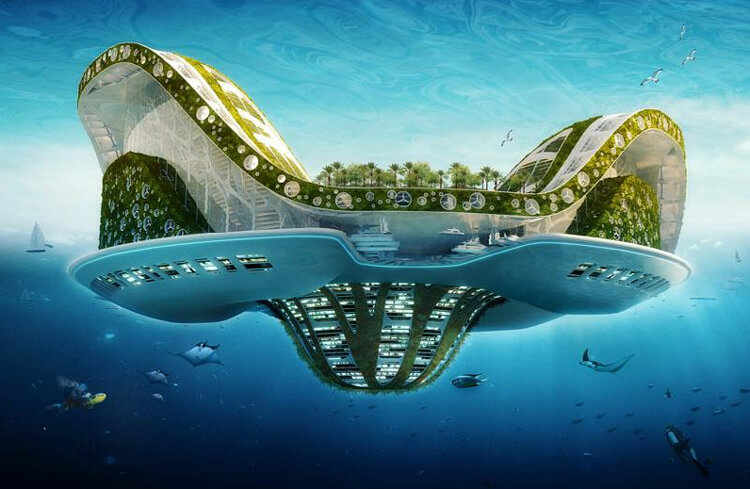
Credit: Vincent Callebaut architects
Super typhoons have increased ten-fold
The annual number of strong typhoons - whose winds exceed 194 kph (120 mph) - has increased tenfold, due to the continuing trend of global warming. Typhoons similar in strength to the 1959 Typhoon Vera (which killed over 5,000 people and left 1.5 million homeless) are now striking Japan each and every year.* Many parts of East Asia have been long since abandoned due to these and other disasters.
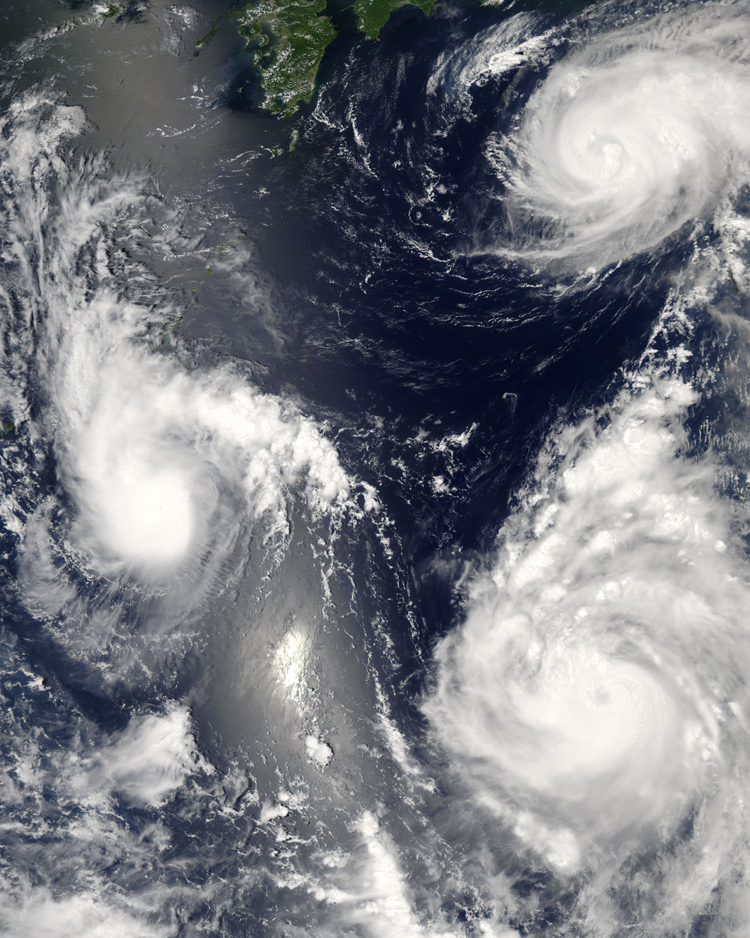
Credit: NASA
The chemistry of Earth's oceans has been radically altered
CO2 emissions in the 19th through 21st centuries lowered the pH level of the oceans by almost 0.5 compared to the natural level. This increased the acidity of seawater, drastically reducing the availability of calcium carbonate which many creatures needed to build shells and skeletons.** Entire regions are now devoid of life - unable to support plankton, molluscs or crustaceans. Food chains have collapsed, with many whales and other large species dying off.
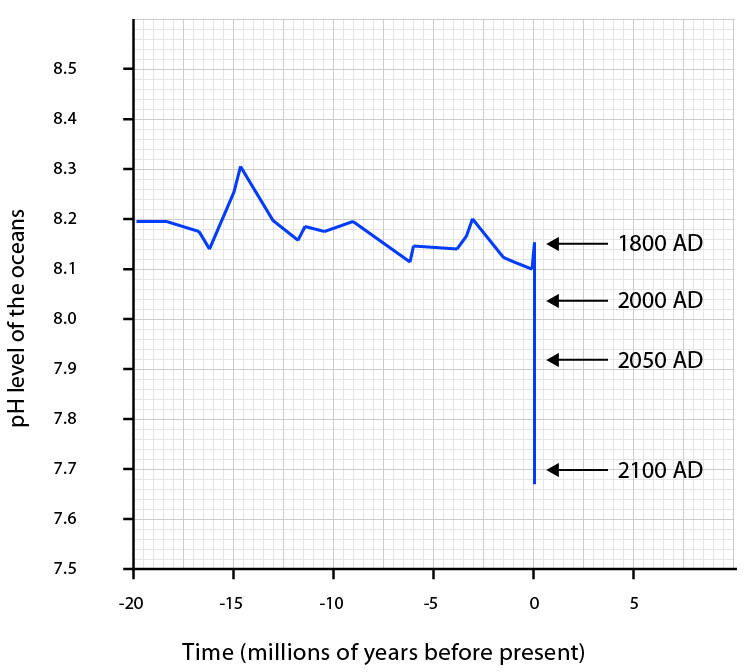
Emperor Penguins face extinction
For centuries, Emperor Penguins were the best-loved and most recognised symbol of Antarctica. By the middle of this decade, their numbers have dwindled to almost nothing because of melting sea ice, depletion of krill and industrial activity.* Small populations continue to exist for several more years, by adapting their breeding habits, but even they will eventually disappear.
Emperor Penguins aren't the only birds vanishing during this time: thousands of other species are disappearing too, as many ecosystems around the world face permanent collapse.*
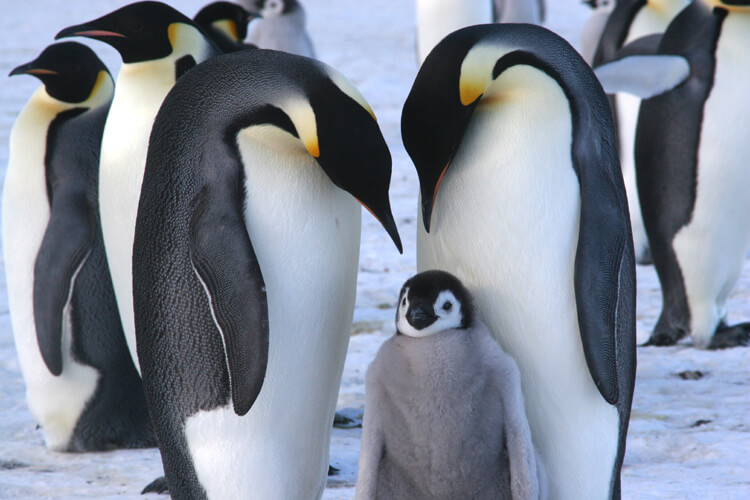
© Bernard Breton | Dreamstime.com
Extreme droughts are affecting nearly one-third of the planet
Global average temperatures during the 21st century soared by over 6°C. Positive feedback loops triggered the melting of Siberian permafrost, in turn releasing vast amounts of methane - a greenhouse gas more than 20 times stronger than CO2. Among the many environmental effects has been a substantial increase in droughts.*
• Moderate droughts, affecting up to 25% of the Earth's surface in 2010, now affect up to 50%.
• Severe droughts, affecting up to 8% of the Earth's surface in 2010, now affect up to 40%.
• Extreme droughts, affecting up to 3% of the Earth's surface in 2010, now affect up to 30%.
Worsening environmental conditions have led to a substantial population die-off, with billions of deaths over the last few decades.** Entire regions now lie abandoned - with agriculture made impossible, once mighty rivers having dried up, and gigantic wildfires engulfing larger and larger areas.
Desalination technology has rescued some countries, but in many others it has failed to meet demand. Efforts to reverse climate change on a global scale, using various geo-engineering techniques, are proving to be insufficient.*

Credit: ilker canikligil
Human intelligence is being vastly amplified by AI
Some regions - such as Canada, northern Europe and Russia - have continued to grow and prosper. Large-scale automation in these countries has led to vast swathes of human employees being replaced by virtual or robotic counterparts. AI systems now occupy almost every level of business, government, the military, manufacturing and service sectors.
Rather than being separate entities, these AI programs are often merged with human minds, greatly extending the latter's capability. For instance, knowledge and skills on any subject can now be downloaded and stored directly within the brain. In addition to basic information and data, this includes a range of physical abilities. A person can learn self-defence, for example, become an expert in any sport, or be taught to operate a new vehicle, all within a matter of seconds.
The world is being transformed by this fusion of people and machines. The vastly greater power of AI means that it has become, at the same time, both master and servant to the human race.
The benefits of this human-AI merger require the extensive use of implants, however - something which a significant minority of the population still refuses to accept. Compared to transhumans, these non-upgraded humans are becoming like cavemen - thousands of years behind in intellectual development.* Unable to comprehend the latest technology, the world around them appears "fast" and "strange" from their increasingly limited perspective.*This is creating a major division in society.

Credit: Indiansummer
Nomadic floating cities are roaming the oceans
At the dawn of the 22nd century, many of the world's cities lie partially submerged due to rising sea levels.*Despite some attempts to build flood defences, even famous locations - such as New York, London, Hong Kong, Shanghai and Sydney - have been affected.
With over 10% of the world's population living on coastlines, hundreds of millions have been forced to migrate. However, disruption of inland food and freshwater supplies - caused by drought, disease, war, overpopulation and other factors – means their journeys often end in vain. Some of the worst-hit countries have been plunged into a state of anarchy. Vast uninhabitable wastelands now cover the equatorial regions, with desperate streams of refugees moving from city to city, fighting over what little scraps remain. There is widespread damage to buildings and infrastructure.
In the US, formerly prosperous breadbaskets in the south have been turned into lifeless deserts, while coastal areas are frequently battered by storm surges, category 6 hurricanes and other freak weather events.*
Meanwhile, the once mighty Amazon rainforest has been reduced to a few oases of greenery surrounded by parched scrubland and dried river beds.
A growing number of citizens are abandoning their homelands altogether and attempting to reach more northerly or southerly latitudes. However, borders are becoming ever more difficult to cross. Limited food, resources and housing are forcing many governments to drastically rethink their immigration policies.
Rich entrepreneurs are exploiting this, by offering a new means of living which does away with national boundaries altogether. This comes in the form of floating, artificial islands - wholly self-sufficient and capable of cruising around the world indefinitely.*
The ships provide the kind of comfort, safety and security that many of their occupants have never experienced before. In addition to a continuous supply of food, freshwater and energy, a number of facilities are available – including state-of-the-art virtual reality suites, android servants/companions, industrial-scale nanotech assemblers, landing pads for anti-grav vehicles, swimming pools and other amenities. Carefully maintained arboretums featuring real trees can also be found on board (flora which are becoming increasingly rare these days).
These giant, amphibious ships are especially popular in southeast Asia, which has been hit hardest by the effects of climate change. Some of the largest craft measure over a kilometre in diameter with tens of thousands of residents. Whole new cultures are forming on these "micronations", based on sustainable ways of living and a mutual respect for humanity and nature.*

Credit: Vincent Callebaut architects
Super typhoons have increased ten-fold
The annual number of strong typhoons - whose winds exceed 194 kph (120 mph) - has increased tenfold, due to the continuing trend of global warming. Typhoons similar in strength to the 1959 Typhoon Vera (which killed over 5,000 people and left 1.5 million homeless) are now striking Japan each and every year.* Many parts of East Asia have been long since abandoned due to these and other disasters.

Credit: NASA
The chemistry of Earth's oceans has been radically altered
CO2 emissions in the 19th through 21st centuries lowered the pH level of the oceans by almost 0.5 compared to the natural level. This increased the acidity of seawater, drastically reducing the availability of calcium carbonate which many creatures needed to build shells and skeletons.** Entire regions are now devoid of life - unable to support plankton, molluscs or crustaceans. Food chains have collapsed, with many whales and other large species dying off.

Emperor Penguins face extinction
For centuries, Emperor Penguins were the best-loved and most recognised symbol of Antarctica. By the middle of this decade, their numbers have dwindled to almost nothing because of melting sea ice, depletion of krill and industrial activity.* Small populations continue to exist for several more years, by adapting their breeding habits, but even they will eventually disappear.
Emperor Penguins aren't the only birds vanishing during this time: thousands of other species are disappearing too, as many ecosystems around the world face permanent collapse.*

© Bernard Breton | Dreamstime.com
2110
Terraforming of Mars is underway
Although no physical processes have been introduced yet, the first serious plans are being drawn up for the planet's gradual transformation, with the ultimate goal of making it habitable for humans. Exactly who will be given control of Mars and its resources - or if the planet should have complete independence - is the subject of much debate and speculation around this time.
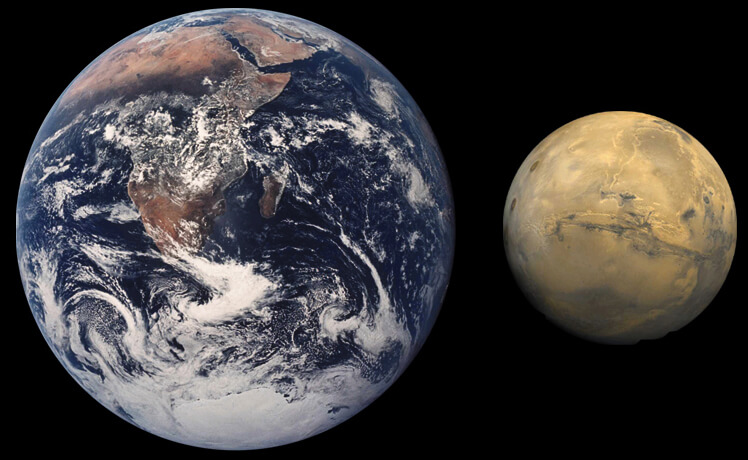 Credit: NASA
Credit: NASAForce fields are in military use
A combination of several unique technologies - stacked together in layers - has led to a radical new form of protective shielding.* To observers from the previous century, this would resemble the "force fields" depicted in science fiction movies. When activated, it provides an instant, near-impenetrable field withstanding hits from all but the most powerful weaponry.
The outer layer consists of a supercharged plasma window, shaped into a dome or sphere by electromagnetic fields. This is hot enough to vaporize most incoming metals.
A secondary layer underneath contains millions of curved laser beams, producing a high-energy web that captures projectiles fast or powerful enough to bypass the plasma window.
A third layer consists of a "lattice" made from trillions of carbon nanotubes. These microscopic structures are woven together in an instant, forming a diamond-hard shell repelling objects missed by the other two layers. If necessary, it can be extended to cover a larger perimeter, at the cost of decreased strength. Conversely, it can be reduced in size to provide an even denser and more durable barrier.
The layers described above can protect against the majority of bullets, bombs and projectiles. However, they are almost useless against lasers. A fourth and final layer takes care of this problem. It uses photochromatic particles, which change their properties when exposed to laser light, effectively neutralising most directed-energy weapons. An early form of this technology was seen a century previously, with sunglasses that changed colour when exposed to sunlight.
In addition to warzones, these multilayered force fields are being used in various other situations. National borders, for example, are being made more secure - as are many sources of food and water production. Corporate spaces and luxury dwellings owned by the rich are also utilising them. A number of satellites are being fitted with this technology too.
Femtoengineering is practical
Technology on the scale of quadrillionths of a metre (10-15) is becoming possible around this time.* This is three orders of magnitude smaller than picotechnology and six orders of magnitude smaller than nanotechnology.
Engineering at this scale involves working directly with the finest known structures of matter - such as quarks and strings - to manipulate the properties of atoms. This development is a further step towards macro-scale teleportation, i.e. transportation of objects visible to the naked eye. Significant breakthroughs in anti-gravity and force field generation will also result from this.
Another area that will see major progress is in materials technology. For example, metals will be produced which are capable of withstanding truly enormous pressures and tensile forces. The applications for this will be endless, but perhaps one of the most exciting areas will be in the exploration of hostile environments - such as probes capable of travelling within the Sun itself, and tunnelling machines that can penetrate the Earth's crust into the layers of magma beneath. Longer term, this development will pave the way for interstellar ships and the massive forces involved in lightspeed travel.
Other more exotic materials are becoming possible - including wholly transparent metals, highly luminous metals, frictionless surfaces, and ultradense but extremely lightweight structures.
As with many areas of science, femtoengineering is being guided by advanced AI, which is now trillions of trillions of times more powerful than unaided human intelligence.
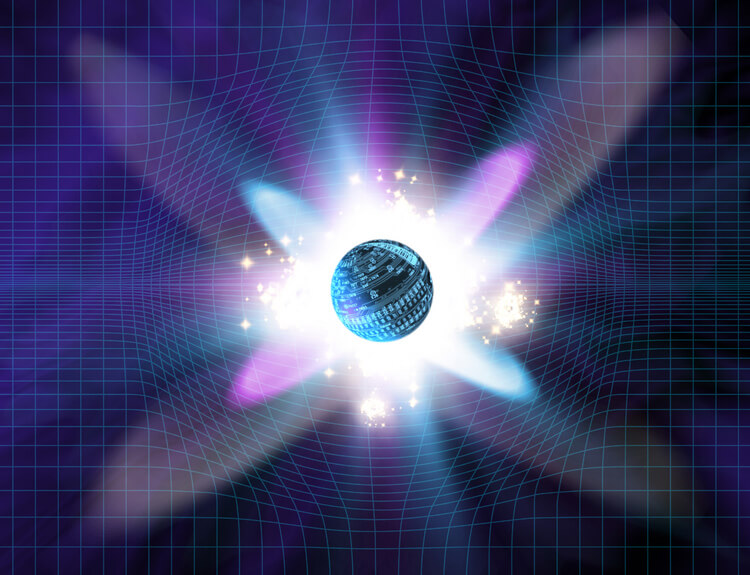
© Antony Papantoniou | Dreamstime.com
Man-made control of earthquakes and tsunamis
By now, geophysicists have mapped the entirety of the Earth's crust and its faults, extending some 50 km (30 mi) below the surface. Computer simulations can forecast exactly when and where an earthquake will occur and its precise magnitude. With a "scheduling" system now in place, comprehensive preventative measures can be taken against these disasters.
For instance, people know when to stay out of the weakest buildings, away from the bridges most likely to collapse and otherwise away from anything that might harm them. Rescue and repair workers can be on duty, with vacations cancelled and extra workers brought in from other areas. Workers can be geared up with extra equipment ordered in advance to fix key structures that may fail in an earthquake. Freeways can be emptied. Dangerous chemical freight can be prevented from passing through populated areas during the quake. Aircraft can be stopped from approaching a potentially damaged runway. Weak water reservoirs can have their water levels lowered in advance. Tourists can be made to stay away. All of these measures can substantially reduce casualties and economic disruption.
However, some nations are going one step further and creating additional systems, in the form of gigantic engineering projects. To protect the most earthquake-prone regions, a network of "lubrication wells" is being established. These man-made channels penetrate deep underground, to the very edge of the mantle. They work by injecting nanotechnology-based fluid or gel into fault lines, making it easier for rock layers to slide past each other. Explosive charges can also be dropped at strategic points, in zones where the lubrication might be less effective. Instead of sudden, huge earthquakes, the network induces a series of much smaller earthquakes. Using this method, an earthquake of magnitude 8.0 can be buffered down to magnitude 4.0 or lower, causing little or no damage to structures on the surface. In coastal locations, tsunamis can also be prevented.
This is a carefully controlled process - requiring heavy use of AI - and is by no means perfect. There are complex legal and liability issues in the event of accidents. For instance, damage from human-induced earthquakes cannot be excused as an "act of God."
Despite these technical and legal hurdles, it would seem that mankind is gaining the power to control even the most destructive aspects of nature.*

Our solar system is passing through a million degree cloud of gas
The Sun is approaching a boundary between the Local Cloud of interstellar gas and another cloud of extremely turbulent gas - the latter is the remnants of supernova explosions that occurred millions of years ago.
The density of this medium is sufficiently low to pose no threat to Earth or any other planets. The heliosphere is reformed slightly, and the level of cosmic radiation entering the magnetosphere increases, but nothing more.
However, spacecraft and satellites may be damaged by these high energy particles unless they are upgraded.*
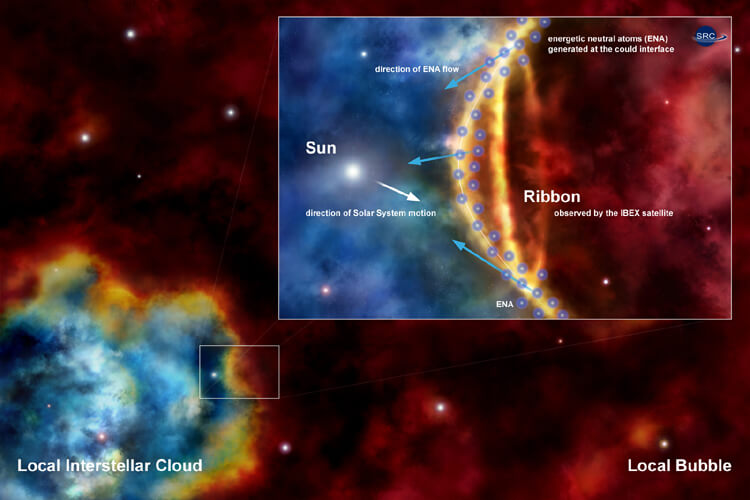
Credit: SRC/Tentaris,ACh/Maciej Frolow
2120
Mind uploading enters mainstream society
Adequate hardware to support human-level intelligence was available as far back as the 2020s, thanks to the exponential progress of Moore's Law.* This made it possible to form simulations of neural processes.
However, the underlying software foundation required for mind uploading proved to be a vastly greater challenge. Full transfer of human consciousness into artificial substrates posed enormous technical difficulties, in addition to raising ethical and philosophical issues.
The sheer complexity of the brain, and its inherent fragility - along with the many legislative barriers that stood in the way - meant that it was nearly a century before such technology reached the mainstream.
Some breakthroughs occurred in the latter decades of the 21st century, with partial transfer of memories and thought patterns, allowing some limited experience of the mind uploading process. However, it was only through the emergence of picotechnology and strong AI that sufficiently detailed scanning methods became available. This new generation of machines, being orders of magnitude faster and more robust, finally bridged the gap between organic human brains and their synthetic equivalents.
Initially tested on monkeys, the procedure was eventually offered to certain marginalised people including death row inmates and terminally ill patients. Once it could be demonstrated as being safe and reversible, the project garnered a steady stream of free and healthy volunteers, tempted by this new form of computerised immortality.
Years of red tape and legislation followed, including some of the strictest regulations ever enacted into law. Religious and conservative groups voiced their objections to what they saw as a fundamental violation of God's will. At times, this threatened to postpone the technology indefinitely. Eventually though, like so many other breakthroughs in science, the zeitgeist moved on. The level of demand for mind uploading proved to be enormous, and the treatment was made commercially available in the 2120s.
Today, citizens have access to special clinics in which their biological brains can be literally discarded in favour of artificial ones. Rather than simply "duplicating" a mind, the machine physically shifts the consciousness, like a sponge soaking up water. The brain is gradually replaced - piece by piece - so the original personality remains intact during the transition. This vital aspect of the procedure assuages the fear which many have of losing their identity.
For the wealthiest individuals, entire new bodies can be grown, into which the synthetic brains can be transplanted. These bodies may themselves be artificial, with options for partially cyborg or fully robotic replacements. Externally, they are often indistinguishable from real human bodies, but include many hi-tech add-ons and internal features boosting physical and mental abilities.
Not everyone is opting for these types of treatments, however. A significant percentage view them with extreme suspicion, as though somehow immoral and dehumanising. With each passing year, society is becoming increasingly fractured, with an ever-widening divide between those who seek to enhance themselves, and those who prefer to eschew such technology.
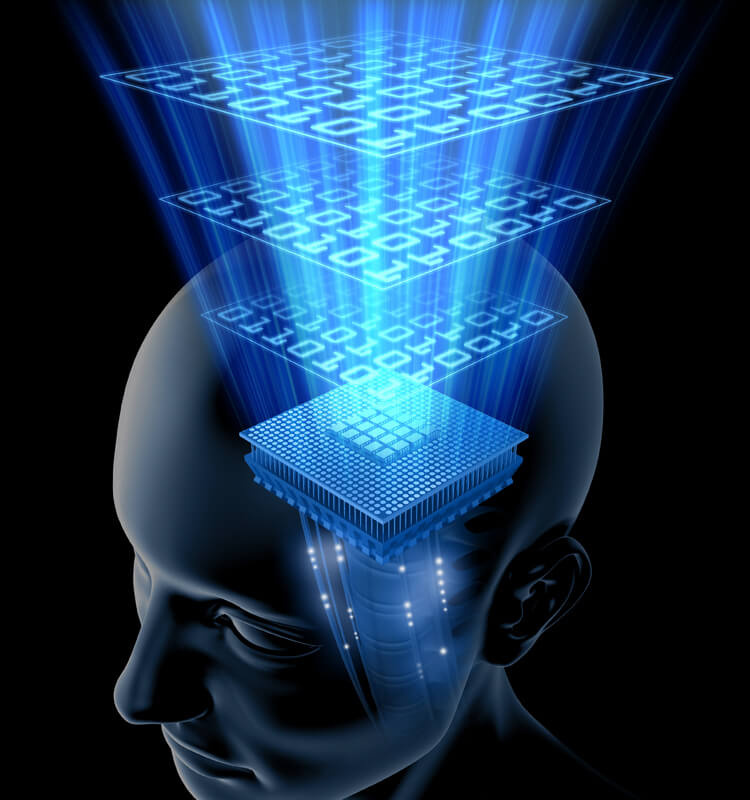
© Kts | Dreamstime.com
The International Space Elevator is operational
Rising from the Pacific Rim, this mega-structure is thousands of miles high. Decades in the making, it has been built entirely from carbon nanotubes. These are hundreds of times stronger than ordinary steel and capable of withstanding the enormous tensile forces involved. The elevator is controlled largely by AI, which monitors any stresses or unusual conditions.
One major obstacle to the project's completion - aside from the initial outlay - was the need for international agreements on safety, security and insurance in the event of an accident. Although the technology was available as far back as 2040, these issues (and others) delayed construction by many years.
A major space boom is now finally underway, as passengers can be delivered to orbit at vastly reduced costs, compared with traditional rocket launches.*
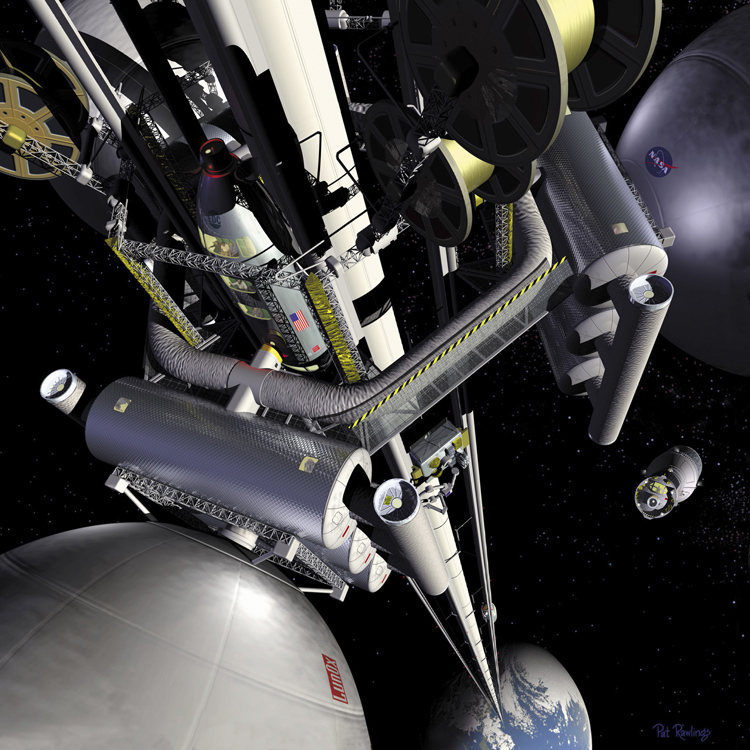
Credit: NASA
2130
Large-scale civilian settlement of the Moon is underway
As a result of the International Space Elevator, huge numbers of Earth's citizens now have rapid, affordable and safe access to space. Dozens of permanent Moon colonies are now being established, funded by various cooperative groups. Nanotechnology self-assemblers enable these habitats to be constructed in hours or days.*Most are concentrated in the southern polar region, which has greater access to water.*
Advances in genetic engineering mean that humans can be fully adapted to the gravity of the Moon. In any case, scientists are developing a form of artificial gravity that will soon become available.
In addition to basic exploration and surveying, the main occupations for colonists at the moment are scientific and technological research, mining, agriculture, energy production, communications and transport/infrastructure management. Many tasks are handled by robots, giving more leisure time for the human residents.
Tourism is now a booming industry, with many thousands of people arriving on the Moon's surface each year for guided tours - even though VR simulations can recreate the Moon's environment. The most popular destinations are Mons Huygens (the highest mountain), Tycho (a prominent crater visible from Earth) and the Apollo landing sites.
A very large telescope is also operational, for long-distance astronomical observations. The lack of atmosphere and other conditions gives it a tremendous advantage over Earth-based telescopes.*
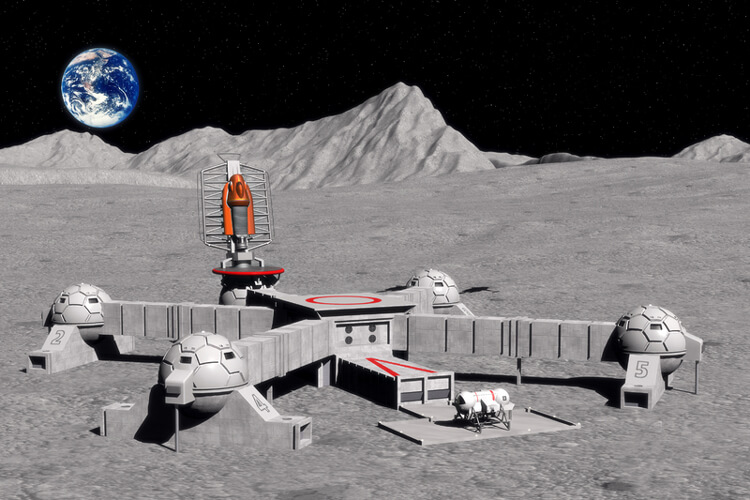
© Luca Oleastri | Dreamstime.com
A North American Union is taking shape
The 21st century witnessed a dramatic rebalancing of America's power, much of it shifting to China and India. However, there were also developments closer to home, with a remodeling of the relationship to her neighbours.
The 21st century witnessed a dramatic rebalancing of America's power, much of it shifting to China and India. However, there were also developments closer to home, with a remodeling of the relationship to her neighbours.
A gradual stagnation of the white population, and simultaneous growth of Hispanics, offered the first hints of what lay ahead. This trend would continue long into the future, with Latin American immigrants eventually dominating the southwestern states. By the late 21st century, territory had been ceded to Mexico - which had itself become a fully developed, industrialised nation.*
Alongside this, Canada began to experience a population and economic surge almost unparalleled in its history. Soaring global temperatures were providing access to a treasure trove of natural resources, previously locked up in the frozen north - even as the US was being ravaged by drought, flooding, wildfires and other adverse conditions. With Canada's environment now vastly more favourable, newcomers flocked in their millions to its cheap, wide, green lands.*
After decades of further homogenisation and cultural interchange between each of the three nations, US power has continued to wane, both at home and abroad. Meanwhile, national borders are becoming increasingly irrelevant in the world at large. Ongoing globalisation, the birth of a single world currency, the dominance of artificial intelligence in government, a defection of citizens to online "virtual states", and other technological advances have contributed to this. Europe has already formed its own superstate, while parts of Asia are now converging too.
In light of all this, the USA begins talks with Canada regarding a North American Union. With a more globalised, supranational sentiment emerging, they are gradually unified under a single political system - strengthening the power and influence of both.
Mexico eventually joins too. In later decades, further expansion of the union occurs with even Cuba, the Dominican Republic and other parts of the Caribbean seeing integration. By the end of the 22nd century, the whole of North and South America has joined to become the "American Union", paving the way for a truly united world government in the 23rd century.
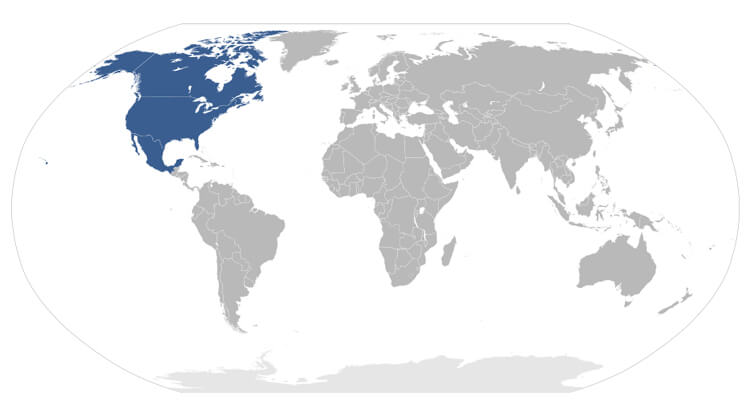
Credit: El_bart089
Teleportation of large stationary objects is possible
Teleportation of stationary objects around one to two metres in size is now possible. It will be many years before living, breathing subjects can be teleported, however. At present, use of this technology is strictly limited to:
Teleportation of stationary objects around one to two metres in size is now possible. It will be many years before living, breathing subjects can be teleported, however. At present, use of this technology is strictly limited to:
- scientific experiments
- highly classified government activities
- military operations
- surface-to-orbit transportation of equipment
- emergency situations requiring a rapid response
2150-2199 Contents
2150
Interstellar travel is becoming possible
Around this time, various private commercial spacecraft are sent to Alpha Centauri, Barnard's Star, Wolf 359 and other neighbouring star systems. The fastest of these are capable of achieving 0.08-0.1c (8-10% lightspeed), requiring around 40 years to reach their destination.* A variety of propulsion systems are being utilised - from nuclear pulse propulsion, to solar sail technology, to other more experimental methods.
Most of these vessels are crewless, with only a handful of humans daring enough to attempt such a voyage. However, each craft is equipped with powerful AI, automated systems and robots which do a better job than any human could, in any case.
Protection from incoming meteors is provided by cone-shaped force fields, projected from the front of each craft. This streamlined shape allows such debris to simply drift by without causing any damage.
After several decades of interstellar travel, the majority of probes successfully rendezvous with their destinations. Each returns a treasure trove of data and visual information. Among the many discoveries is a planet similar in size to Earth, with over 90% of its surface covered in liquid water, though no life forms are detected. Another, much larger and rockier world is discovered in the same system, with a highly active geology and volcanism. A host of interesting and unique moons, asteroids, ring systems and other astronomical features are catalogued.
The success of these missions acts as a catalyst, further accelerating the current boom in space travel.
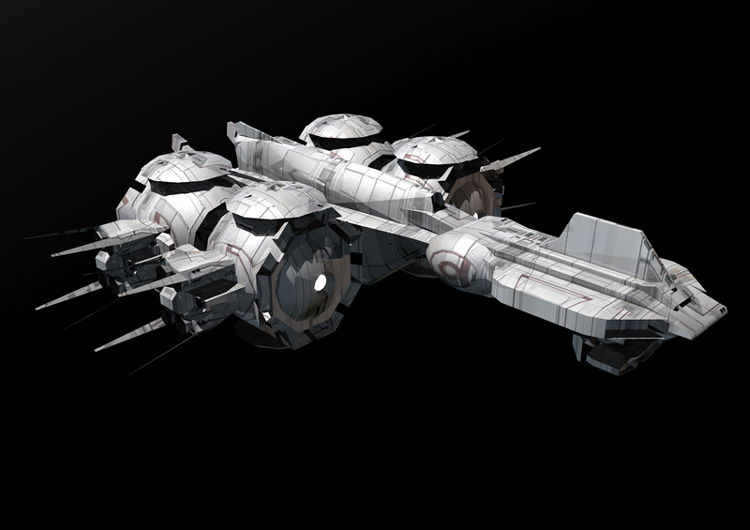
© Luca Oleastri | Dreamstime.com
Androids physically indistinguishable from real humans
Androids have been appearing amongst the general populace for many decades already. However, it is by the middle of this century that they achieve a truly lifelike appearance and mobility, making them indistinguishable from people. Many are now employed in service-based roles.
The typical android of today would appear remarkably calm and subdued, however. They would rarely (if ever) express any strong emotions. Their cognitive abilities would be geared towards hard facts and objective data, rather than subjective views or emotional reasoning.
For this reason, they are regarded as servants at this point in history. However, major advances will be made in the coming decades that will see them replicate even the subtlest of human traits. With androids playing an increasing role in society, a civil rights movement will develop, similar to that which dominated America 200 years earlier.*

© Andrejs Pidjass | Dreamstime.com
Hi-tech, automated cities
An observer from the previous century - walking through a newly developed city of today - would be struck by the sense of cleanliness and order. The air would smell fresh and pure, as if they were in 20th century countryside. Roads and pavements would be immaculate: made of special materials that cleaned themselves, absorbed garbage and could self-repair in the event of damage. Building surfaces, windows and roofs would be completely resistant to dirt, bacteria, weather, graffiti and vandalism. These same coatings would be applied to public transport and other vehicles. Everything would appear brand new, shiny and in perfect condition at all times. Greenery would feature heavily in this city, along with spectacular fountains, sculptures and other beautification.
Lamp posts, telegraph poles, signs, bollards and other "clutter" that once festooned the streets have disappeared. Lighting is now achieved more discretely, using a combination of self-illuminating walls and surfaces, antigravity and other features designed to hide these eyesores and maximise pedestrian space and aesthetics. Electricity is passed wirelessly from building to building. Room temperature superconductors - implanted in the ground - allow the rapid movement of vehicles without the need for tracks, wheels, overhead cables or other bulky components. Cars and trains simply drift along silently, riding on electromagnetic currents.
Sign posts are obsolete - all information is beamed electronically into a person's visual cortex. They merely have to "think" of a particular building, street or route to be given information about it.
This observer would also notice their increased personal space, and the relative quiet of areas that, in earlier times, would have bustled with cars, people and movement. In some places, robots tending to manual duties might outnumber humans. This is partly as a result of the drastic reduction in the world's population. However, it is also because citizens of today spend the majority of their time in virtual environments. These wholly convincing, simulated realities offer practically everything a person needs in terms of knowledge, communication and interaction – often at speeds vastly greater than real time. Limited only by a person's imagination, they can provide richer and more stimulating experiences than just about anything in the physical world.
On those rare occasions when a person ventures outside, they are likely to spend little time on foot. Almost all services and material needs can be obtained within the home, or practically on their doorstep - whether it be food, medical assistance, or even replacement body parts and physical upgrades. A "shop" in the developed world is likely to be run entirely by AI. It will know exactly what you need before you even set foot in it, and will have everything ready upon your arrival (if you even arrive at all, since robots can deliver most goods and services). The same goes for hospitals and other amenities.
Social gatherings in the real world tend to be infrequent - usually reserved for "special" occasions such as funerals, for novelty value, or the small number of situations where VR is impractical.
Crime is almost non-existent in these hi-tech cities. Surveillance is everywhere: recording every footstep of your journey in perfect detail and identifying who you are, from the moment you enter a public area. Even your internal biological state can be monitored (such as neural activity and pulse), giving clues as to your immediate intentions. Police can be summoned within seconds if necessary, often consisting of robotic squads in antigravity vehicles.
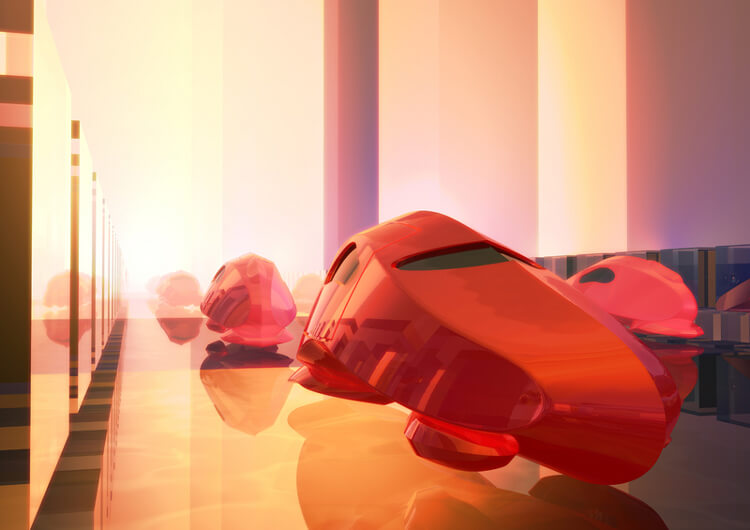
© Luca Oleastri | Dreamstime.com
Although safe and clean, these hi-tech districts might appear somewhat sterile to an observer from the previous century. They would lack the grit, noise and character which defined cities in past times. One way that urban designers are overcoming this problem is through the use of dynamic surfaces. These create physical environments that are interactive. Certain building façades, for instance, can change their appearance to match the tastes of the observer. This can be achieved via augmented reality (which only the individual is aware of), claytronic surfaces and holographic projections (which everybody can see), or a combination of the two. A bland glass and steel building could suddenly morph into a classical style, with Corinthian columns and marble floors; or it could change to a red brick texture, depending on the mood or situation.
Interstellar travel is becoming possible
Around this time, various private commercial spacecraft are sent to Alpha Centauri, Barnard's Star, Wolf 359 and other neighbouring star systems. The fastest of these are capable of achieving 0.08-0.1c (8-10% lightspeed), requiring around 40 years to reach their destination.* A variety of propulsion systems are being utilised - from nuclear pulse propulsion, to solar sail technology, to other more experimental methods.
Most of these vessels are crewless, with only a handful of humans daring enough to attempt such a voyage. However, each craft is equipped with powerful AI, automated systems and robots which do a better job than any human could, in any case.
Protection from incoming meteors is provided by cone-shaped force fields, projected from the front of each craft. This streamlined shape allows such debris to simply drift by without causing any damage.
After several decades of interstellar travel, the majority of probes successfully rendezvous with their destinations. Each returns a treasure trove of data and visual information. Among the many discoveries is a planet similar in size to Earth, with over 90% of its surface covered in liquid water, though no life forms are detected. Another, much larger and rockier world is discovered in the same system, with a highly active geology and volcanism. A host of interesting and unique moons, asteroids, ring systems and other astronomical features are catalogued.
The success of these missions acts as a catalyst, further accelerating the current boom in space travel.

© Luca Oleastri | Dreamstime.com
Androids physically indistinguishable from real humans
Androids have been appearing amongst the general populace for many decades already. However, it is by the middle of this century that they achieve a truly lifelike appearance and mobility, making them indistinguishable from people. Many are now employed in service-based roles.
The typical android of today would appear remarkably calm and subdued, however. They would rarely (if ever) express any strong emotions. Their cognitive abilities would be geared towards hard facts and objective data, rather than subjective views or emotional reasoning.
For this reason, they are regarded as servants at this point in history. However, major advances will be made in the coming decades that will see them replicate even the subtlest of human traits. With androids playing an increasing role in society, a civil rights movement will develop, similar to that which dominated America 200 years earlier.*

© Andrejs Pidjass | Dreamstime.com
Hi-tech, automated cities
An observer from the previous century - walking through a newly developed city of today - would be struck by the sense of cleanliness and order. The air would smell fresh and pure, as if they were in 20th century countryside. Roads and pavements would be immaculate: made of special materials that cleaned themselves, absorbed garbage and could self-repair in the event of damage. Building surfaces, windows and roofs would be completely resistant to dirt, bacteria, weather, graffiti and vandalism. These same coatings would be applied to public transport and other vehicles. Everything would appear brand new, shiny and in perfect condition at all times. Greenery would feature heavily in this city, along with spectacular fountains, sculptures and other beautification.
Lamp posts, telegraph poles, signs, bollards and other "clutter" that once festooned the streets have disappeared. Lighting is now achieved more discretely, using a combination of self-illuminating walls and surfaces, antigravity and other features designed to hide these eyesores and maximise pedestrian space and aesthetics. Electricity is passed wirelessly from building to building. Room temperature superconductors - implanted in the ground - allow the rapid movement of vehicles without the need for tracks, wheels, overhead cables or other bulky components. Cars and trains simply drift along silently, riding on electromagnetic currents.
Sign posts are obsolete - all information is beamed electronically into a person's visual cortex. They merely have to "think" of a particular building, street or route to be given information about it.
This observer would also notice their increased personal space, and the relative quiet of areas that, in earlier times, would have bustled with cars, people and movement. In some places, robots tending to manual duties might outnumber humans. This is partly as a result of the drastic reduction in the world's population. However, it is also because citizens of today spend the majority of their time in virtual environments. These wholly convincing, simulated realities offer practically everything a person needs in terms of knowledge, communication and interaction – often at speeds vastly greater than real time. Limited only by a person's imagination, they can provide richer and more stimulating experiences than just about anything in the physical world.
On those rare occasions when a person ventures outside, they are likely to spend little time on foot. Almost all services and material needs can be obtained within the home, or practically on their doorstep - whether it be food, medical assistance, or even replacement body parts and physical upgrades. A "shop" in the developed world is likely to be run entirely by AI. It will know exactly what you need before you even set foot in it, and will have everything ready upon your arrival (if you even arrive at all, since robots can deliver most goods and services). The same goes for hospitals and other amenities.
Social gatherings in the real world tend to be infrequent - usually reserved for "special" occasions such as funerals, for novelty value, or the small number of situations where VR is impractical.
Crime is almost non-existent in these hi-tech cities. Surveillance is everywhere: recording every footstep of your journey in perfect detail and identifying who you are, from the moment you enter a public area. Even your internal biological state can be monitored (such as neural activity and pulse), giving clues as to your immediate intentions. Police can be summoned within seconds if necessary, often consisting of robotic squads in antigravity vehicles.

© Luca Oleastri | Dreamstime.com
Although safe and clean, these hi-tech districts might appear somewhat sterile to an observer from the previous century. They would lack the grit, noise and character which defined cities in past times. One way that urban designers are overcoming this problem is through the use of dynamic surfaces. These create physical environments that are interactive. Certain building façades, for instance, can change their appearance to match the tastes of the observer. This can be achieved via augmented reality (which only the individual is aware of), claytronic surfaces and holographic projections (which everybody can see), or a combination of the two. A bland glass and steel building could suddenly morph into a classical style, with Corinthian columns and marble floors; or it could change to a red brick texture, depending on the mood or situation.
2151
Total solar eclipse in London
A rare total eclipse takes place in Britain this year, with parts of London experiencing totality.* The last time this occurred was in 1715; the next will be in 2600 AD.
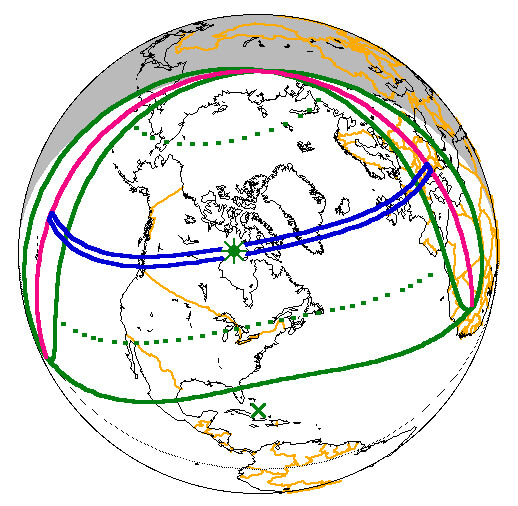
Credit: NASA
2160
Mass extinctions are levelling off
A century has passed since the peak in global extinction rates.* Biodiversity has declined to such a low level that there are now few species left to go extinct. With food chains having collapsed, only the hardiest and most adaptable lifeforms survive today.
The world's fauna is therefore dominated by rats, flies, cockroaches and canines, while plant life is composed largely of weeds, cacti and other wild desert plants.
Throughout the world lie abandoned cities and decaying infrastructure surrounded by vast, polluted wastelands. Small pockets of "rich" biodiversity can still be found – but most of these are contained within artificial environments protected and sealed from the hellish conditions outside. What remains of humanity has fled to the high latitudes, where climates are favourable enough to sustain the hi-tech cities described earlier.

The world's first bicentenarians
Certain people who were born in the 1960s are still alive and well in today's world. Life expectancy had been increasing at a rate of 0.2 years, per year, at the turn of the 21st century. This incremental progress meant that by the time they were 80, these people could expect to live an additional decade on top of their original lifespan.
However, the rate of increase itself had been accelerating, due to major breakthroughs in medicine and healthcare, combined with better education and lifestyle choices. This created a "stepping stone", allowing people to buy time for the treatments available later in the century - which included being able to halt the aging process altogether.*
2170
The first kilometre-sized space station is complete
Construction of this large-scale habitat and research facility was made possible by the International Space Elevator, built half a century previously. This greatly reduced the cost of surface-to-orbit transportation - from tens of thousands of dollars per kilogram in the early 21st century, to less than a dollar per kilogram by the early 22nd.
Several other large-scale space stations have been appearing in Earth orbit during the last few decades - but this is the largest, and represents a new generation. It contains an entire fusion power plant at its core, utilises a form of artificial gravity and is home to many hundreds of people and androids.
The commercial space industry is booming during this time, with a regular flow of traffic between Earth, the Moon and several near-Earth asteroids which are now being mined for raw materials.*
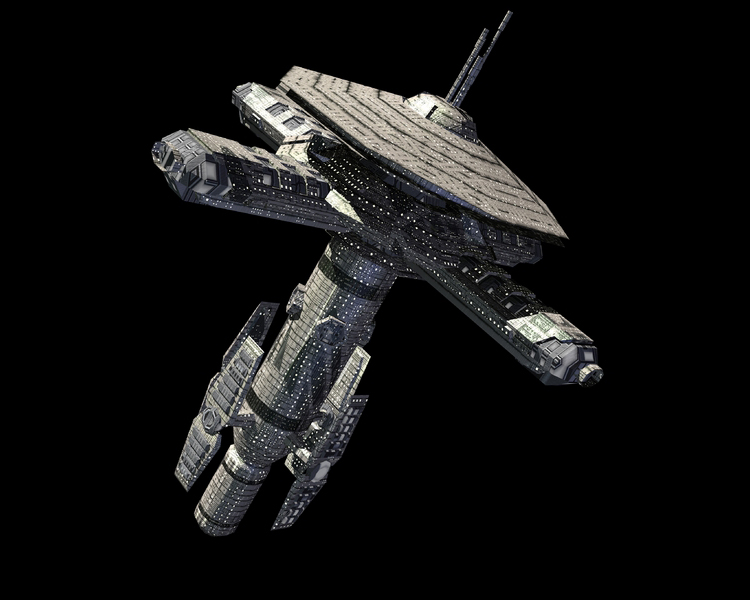
© Luca Oleastri | Dreamstime.com
2180
Antimatter power plants are coming online
A century after the global deployment of fusion, new forms of power production are becoming necessary in order to cope with the exponential rise in energy demands on Earth and elsewhere.
A new generation of power plants is becoming available, capable of harnessing the energy released in matter/antimatter collisions. The reactions involved are 1,000 times more powerful than the fission produced in nuclear power plants and over 300 times more powerful than nuclear fusion energy.*

© Oleg Osharov | Dreamstime.com
Asteroid terrorism
Rapid civilian expansion into the solar system - and the increasing ease of access to space technology - has led to the emergence of a new and deadly form of terrorism. This involves the sabotage or hijacking of spacecraft, for use in the purposeful redirection of asteroids towards Earth, Mars and the Moon.*
Various colonies in the outer solar system are also being targetted. These are particularly vulnerable, since they tend to lack the orbital infrastructure and defences necessary to deflect these huge incoming objects. At least one major colony around Jupiter is devastated during this time.
In addition to religious extremists, there is a growing anarcho-primitivist movement. This consists of small underground cults opposed to the increasing dominance of AI in the running of world affairs. They deplore what they see as forced, unnatural changes and technologies sweeping humanity - instead favouring a return to more traditional lifestyles and cultures. They are prepared to resort to whatever means necessary to achieve this.*
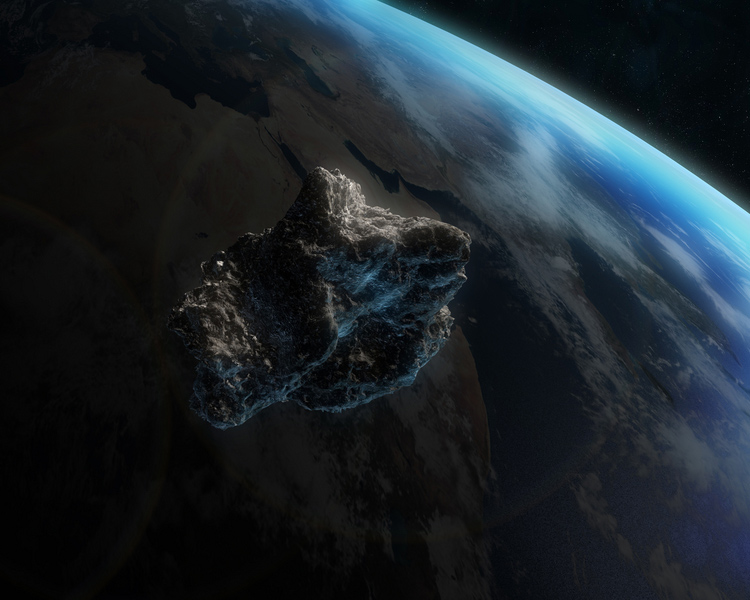
© Sebastian Kaulitzki | Dreamstime.com
2190
Matter replication devices are available for the home
Towards the end of this century, home appliances are becoming available which can instantly reproduce almost any known substance, at quantum fidelity.* This is achieved using a combination of femtoengineered components and exceedingly complex fractalised software, capable of handling the stupendous number of calculations involved. These devices are just one of many spinoff technologies resulting from the development of macro-scale teleportation in previous decades.
Originally used in factories, science labs and corporate environments, the machines were big enough to fill entire rooms, and often required huge amounts of power. They worked well for large enterprises but were completely impractical for the consumer market.
However, much like the IT industry, exponential progress in this field led to a rapidly shrinking form-factor. Combined with power conservation and heat dissipation techniques, a new generation of replicators began to evolve that were ultra-compact. Eventually they became small enough to fit on kitchen worktops.
Today, these devices are as cheap and commonplace as microwave ovens were in the late 20th century. They are most commonly used as food synthesisers, but a variety of other household items can be reproduced.
Raw mass resources - in the form of sterilised organic particulates - are stored in compartments within the machine. To save energy and computational power, these have been specially formulated to statistically require the least quantum manipulation. The user inputs their choice either via mind control, or voice activation. Molecular analysers then scan each and every subatomic particle, while trillions of Heisenberg compensators maintain cohesion as the object begins to materialise, held in place by micro force-fields. The process takes a matter of seconds and can be repeated indefinitely - resources are beamed in from an external supplier, like tap water.
A vast database containing information on food, clothing and other objects is constantly maintained online. This is automatically downloaded into each machine, and contains many freely available programs.
These devices will play a major role in eliminating poverty, disease and hunger throughout the world. Traditional agriculture, manufacturing and distribution will become obsolete, replaced by purely information-driven systems that are completely decentralised.*
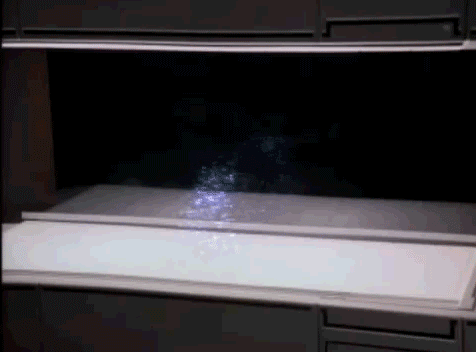
Global languages are becoming few in number now; education has been vastly accelerated
The world has become so homogenised as a result of globalisation that only a handful of languages remain in existence.* This compares with over 7,000 languages in the year 2000.*
The spoken word has been relegated to a secondary function. Mind interfaces have become the preferred method for in-person communication. These are transparently embedded in clothing, or directly in the body. This form of digital telepathy has been available for over a century - but has now been perfected, so that colossal streams of audio-visual data can be sent and received in addition to basic thoughts and feelings.
Practically all education and training is now achieved in this way. Schools have become obsolete, with teaching instead taking place in a home environment. The learning process has been accelerated to such an extent that a child of today could learn the entire curricula of a 20th century classroom in a microsecond - just by connecting to the "global brain" of the Internet.
This process is facilitated by a combination of genetic engineering and neural upgrades - applied before birth - which extend the brain's capacity and throughput by many orders of magnitude. To an observer from the year 2000, a typical child of the late 22nd century would appear like a miniature Einstein: an expert on virtually any subject, capable of conversing fluently on everything from quantum mechanics to the inner workings of a spacecraft.
The West Antarctic ice sheet is beginning to disintegrate
Global average temperatures are now 8°C higher than pre-industrial times.
Although CO2 emissions fell sharply in the mid-21st century, positive feedback loops had already been triggered, making it too late to prevent global warming. By the end of the 22nd century, a whole series of tipping points is being reached. Most significant is the West Antarctic ice sheet - containing 2.2 million cubic kilometres of ice - which is now beginning to disintegrate. Substantial melting is also being experienced in Greenland and Iceland, contributing vast quantities of additional water.*
Sea levels have risen nearly 4m as a result of all this, radically altering the geopolitical map of the world.*
Earth is becoming a desert planet, with a highly volatile climate and fluctuating extremes of weather. Most of civilisation is crammed into dense vertical cities around freshwater locations, far away from the coast - and highly dependent on advanced technology.
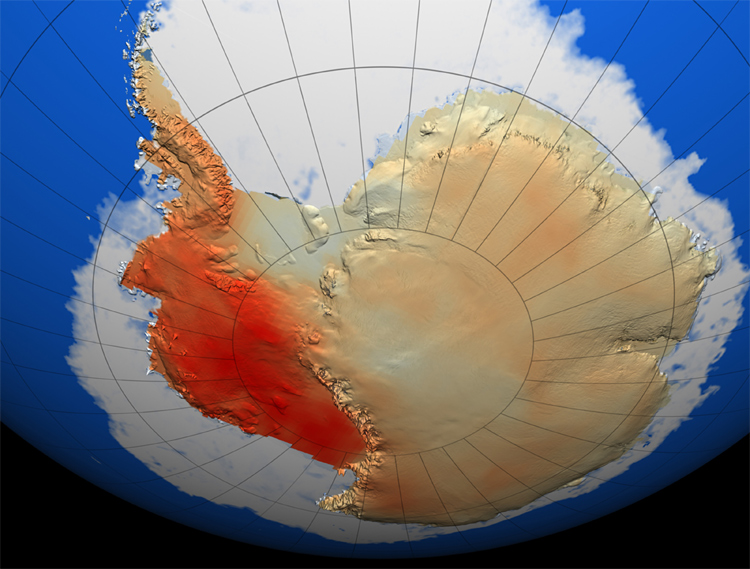
Credit: NASA/GSFC Scientific Visualization Studio
The 23rd century
AI completely dominates the planet now. Almost every aspect of world affairs is controlled by superintelligent entities formed of billions of inorganic minds working in unison. These "Artilects" work at speeds and scales that would be incomprehensible to observers from the 21st century. Global issues that persisted for years in the past can now be resolved in timescales measured in hours, minutes or even less.
The medium which used to be known as the Internet has evolved into something quite profound: for many people it has replaced physical reality entirely. Reverse engineering of the brain, combined with advanced nanotechnology, allows human minds to be fully detached and immersed within digital environments. These virtual worlds offer a kind of immortality now.
Despite the environmental catastrophe which has ravaged Earth, the awesome resources available online mean that war, conflict, poverty and disease are gradually being consigned to history. The knowledge and education that is free to everyone has fostered a culture of trust and cooperation, while technological breakthroughs are continuing to raise living standards. Only a few backwater, insular nations remain unaffected - perhaps due to dictatorial governments, religious institutions, geographical isolation or other factors. Even these parochial places will soon be joining the rest of humanity.
Although virtual reality dominates today's culture, physical reality still holds great interest for many. In one of the largest projects ever undertaken, the natural world is restored to its pre-industrial state, with vast areas of forest and grassland replanted, many extinct species brought back to life, countless fish reintroduced to the oceans, and purification of the Earth's atmosphere and water. Strict limits on the gathering of resources are enforced, with the aim of never again returning to the nightmare of the 21st century.
The space industry goes through another transformation. Venus and Mars both have terraforming programmes underway; the latter is now home to many large cities. The Moon, too, has millions of permanent inhabitants. Asteroid mining is a booming industry, with numerous operations underway. There are dozens of scientific stations on the moons of the gas giants. The Kuiper Belt is fully probed and catalogued, as is the Oort Cloud. Beyond the Oort Cloud, a huge network of telescopes is constructed. Throughout this period, numerous Earth-like planets are observed throughout the galaxy, though even the nearest of these worlds is dozens of light years away. However, anti-matter propulsion is allowing the first manned exploration of neighbouring stars, with the Alpha Centauri system and others gaining their first permanent colonies.
Meanwhile, the secrets of the Universe itself - and the origin of matter - are close to being finally solved by the world's top scientists and AI programs...
2200-2249 Contents
2200
The World in 2200
The average person of today is likely to spend the vast majority of their time in a virtual reality of some kind. Physical society and culture still exists - but most now eschew it, in favour of the Godlike capabilities they can experience online.
The average person of today is likely to spend the vast majority of their time in a virtual reality of some kind. Physical society and culture still exists - but most now eschew it, in favour of the Godlike capabilities they can experience online.
It is becoming very rare to encounter a friend or colleague in person now. In fact, you are more likely to encounter a form of artificial intelligence today, than you are to encounter a living, breathing human. Urban centres are becoming eerily deserted, with most citizens to be found in their homes, or in digital libraries and entertainment venues, engaged in complex simulations wired directly to their brains. Manufacturing industries have been entirely automated now - as well as most workplaces - with almost everyone now working from home. The Internet has evolved into what is, essentially, a gigantic global mind: transparently embedded in everything from clothing to fields of corn, from cars to space stations.
Literally everything has been automated, controlled and made easier. Take peoples' hair, for example. This no longer requires cutting by human hands: it can simply be grown according to a program of your choice. Genetic information is beamed to receivers in your neural interface, instructing the nanobots in the body to apply the appropriate style, colour or length. Precision and control is achieved on a molecular level, with the treatment completed in seconds.
Often, styles are designed by ordinary citizens, or AI, then promoted via online communities, with the best ones rated and made popular, in a manner similar to the commercial music charts of previous centuries. This same process is used for a whole host of other goods and services - from domestic pets, to gardening, to body tatoos, to gourmet food. In this way, a person can become relatively famous by modifying the genetic coding or molecular structure of different items, using the knowledge available to them online.
Technology is changing everything. It is eliminating famine, disease and the need for war, with only a handful of the most backwater nations remaining unaffected by the Singularity. These are closely monitored by the developed states, with severe penalties for any which threaten the technological progress of the rest of the world.
For the majority of the world's citizens, practically any desired resource can be synthesised instantly and automatically, via the technologies available in the home today. These are divided between needs and wants, however - so a citizen will be unable to request a large supply of gold (for example), but will have an immediate and unlimited supply of food, water, clean clothes and other essential needs. "Points" have to be earned in order to access the more sophisticated products and services, and these can be earned by contributing knowledge or innovative ideas to the web.
This development of ideas and information is essentially the main function of the world's economy today. Physical items can be manufactured and distributed so easily that they are no longer a significant part of GDP. What matters today is the information behind items, rather than items themselves.
Poverty, hunger and disease are being eradicated worldwide
Within a few years of its mass market debut, the cost of matter replication has declined to almost negligible levels. Even the poorest nations are gaining widespread access to it, thanks to exponential trends in price performance. The pace of technological change is becoming so fast that even high-end devices can be practically given away for free - within hours or days - as newer and more efficient models make them obsolete.
Within a few years of its mass market debut, the cost of matter replication has declined to almost negligible levels. Even the poorest nations are gaining widespread access to it, thanks to exponential trends in price performance. The pace of technological change is becoming so fast that even high-end devices can be practically given away for free - within hours or days - as newer and more efficient models make them obsolete.
Just as computers, mobile phones and other modern conveniences spread to the Third World in the 21st century, the same is now happening with advanced nanotechnology.
This time, however, the changes in society are even more profound.
Citizens no longer have to rely on farming, fishing or forestry to provide their material needs. Huge imports from elsewhere in the world are no longer necessary either. All food and other essential needs (such as medical supplies) can be generated in the home, at the push of a button. These devices - which utilise the power of teleportation - have led to the complete decentralisation of agriculture, manufacturing and distribution. Living standards around the world are beginning to soar thanks to this and other breakthroughs, together with vastly improved education, healthcare, transport, communication, energy and environmental management.
Most of these services are controlled entirely by AI, which is now dominating global affairs - supplanting the power of government whilst undermining the traditional oligarchy in many regions. For most of humanity, the early 23rd century marks a period of enormous prosperity.
2210
A global rewilding effort is underway
Human activity in the 19th through 22nd centuries led to the catastrophic decline and wholesale collapse of the natural world. Of the approximately 30 million known species of flora and fauna, more than 90% were lost as a result of pollution, climate change, deforestation, mining, agriculture, urban sprawl, overfishing and hunting.
Human activity in the 19th through 22nd centuries led to the catastrophic decline and wholesale collapse of the natural world. Of the approximately 30 million known species of flora and fauna, more than 90% were lost as a result of pollution, climate change, deforestation, mining, agriculture, urban sprawl, overfishing and hunting.
Extinctions on this scale had occurred only five times previously in the whole of Earth's 3 billion year natural history.
Various wars, nuclear attacks, industrial accidents and nanotechnology experiments also played a role in making large tracts of the world essentially lifeless.
Permanent damage was done to countless habitats. The Amazon rainforest - perhaps the most egregious example - shrank to become mostly desert by the 22nd century. Meanwhile, ocean acidification caused by rising CO2 levels resulted in the total decimation of coral reefs. The Arctic became devoid of ice during summer months, while melting in Greenland, Iceland, West Antarctica and elsewhere led to sea level rises of nearly four metres by 2200.
All of this occurred despite an in-depth scientific knowledge of the processes underway. Long term sustainability and sensible management of resources were sacrificed in favour of short term profits, political influence and personal gain. By the time most governments began to enact serious measures, it was already too late.
Biodiversity fell away to such an extent that - for those born during the late 20th century - the planet became almost unrecognisable. Younger generations growing up in this new world found themselves bitterly resentful at what their predecessors had allowed to happen. Many in Asia, Africa and South America would never get to experience a real forest, or come face to face with animals larger than a domestic dog, or witness the range of colourful and exotic species that were commonplace before - except in zoos or virtual reality simulations.
Older members of society came to be vilified. Some nations even organised "crimes against nature" trials, leading to the conviction of former politicians and oil barons.
By the 23rd century, however, technology was advancing to a whole new magnitude of power and sophistication. Worldwide, superintelligent entities were now dominating business and government - formulating policies to benefit everybody rather than the few. Meanwhile, a new and gigantic system of orbital infrastructure was being planned, allowing man to directly control the Earth's climate. Consumer devices were also becoming available that could reproduce food and other items without needing to plunder resources from elsewhere in the world.
An idea began to emerge that quickly gained momentum. It would require an international, concerted effort over a number of generations, but it had support from across the political spectrum.
"Pre-Holocene Rewilding" had been discussed in the past and even attempted on a small scale, but global versions lacked the necessary consensus mainly due to the costs, technical challenges and social issues. However, the enormous wealth and prosperity now emerging on Earth - along with the perfection of certain biotechnologies - meant that such a megaproject was becoming feasible.
In essence, it would involve the recreation of extinct animals and plants, brought back to life through a combination of fossil records, DNA samples, computer models and molecular engineering. Once grown or reproduced in sufficient numbers, these would be distributed back to their original native environments: as close as possible to how they lived prior to human industry. They would then be managed in such a way that people could cause them no harm - and vice versa. The staggering power of AI, the web and other technologies would ensure this system worked.
This rewilding effort became the largest single environmental project in history. Entire deserts were transformed back into lush edens, fed by artificial rain generated by orbital infrastructure. Vast areas of abandoned wasteland became rich ecosystems teaming with life - including ancient megafauna such as mammoths. Toxic lakes and rivers were made clean. The oceans were de-acidified, cooled and made habitable once again to countless fish, molluscs, crustaceans, and other aquatic invertebrates. Urban sprawl in cities was dramatically reversed and scaled back, with a focus instead on highly compact vertical structures.
Slowly, the Earth recovered. Humanity reached an equilibrium with its surroundings. Though it would take another few decades, the final elements were falling into place to ensure the future preservation of biodiversity.
2220
Mind uploading is available to a multitude of platforms
The mind uploading process of a century earlier has been perfected by now, giving citizens access to a dizzying array of options.
The mind uploading process of a century earlier has been perfected by now, giving citizens access to a dizzying array of options.
A person of today can choose from a plethora of artificial bodies into which they can "sleeve" themselves depending on their mood or the situation. These might be human, or robotic, or some other more exotic design. The most extreme examples can even take the form of animals, or mythological creations. An individual may upload themselves into the body of an eagle, for instance, and go flying for a few days. Or they could travel to an underwater locale and utilise a mermaid-like body, complete with gills and a tail.
This process is being used extensively in the global rewilding efforts, to improve the monitoring of animal populations and ensure their successful integration back into the environment. Some of the more committed environmentalists are choosing to abandon their human bodies altogether, devoting their consciousness entirely to the natural world.
Humanity is fracturing into all sorts of bizarre and surreal forms during this time, due to the genetic enhancements and cybernetic upgrades now available.
Mind transfer is now possible almost anywhere, at any time, thanks to the miniaturisation and portability of the technology, together with the supporting infrastructure which has developed on Earth and elsewhere. The space industry routinely has people uploading to massive robots, in order to carry out large-scale engineering work. This is especially true of asteroid mining stations.
The Light Year Array is operational
At the edge of the solar system - beyond the shroud of comets known as the Oort Cloud - a vast spherical network of telescopes is operational. This has a total collecting area measuring one light year in diameter. By comparison, the largest network of the early 21st century was the ground-based Square Kilometre Array.
At the edge of the solar system - beyond the shroud of comets known as the Oort Cloud - a vast spherical network of telescopes is operational. This has a total collecting area measuring one light year in diameter. By comparison, the largest network of the early 21st century was the ground-based Square Kilometre Array.
The Light Year Array is composed of millions of automated radio telescopes, constructed using self-replicating nanotechnology. Together, these provide astronomers with an almost Godlike view of the cosmos. Under the direction of AI, the network identifies and catalogues nearly every galaxy within 13.7 billion light years - including most of the stars and planets in each - to produce a detailed, 3-dimensional map of the Universe.*
Furthermore, the motion vector of each star makes it possible to form a gigantic simulation, capable of being run backwards to the birth of the Universe, or forwards to billions of years in the future. This allows scientists to view a highly accurate model of the aftermath of the Big Bang, as well as the likely ultimate fate of the Universe.
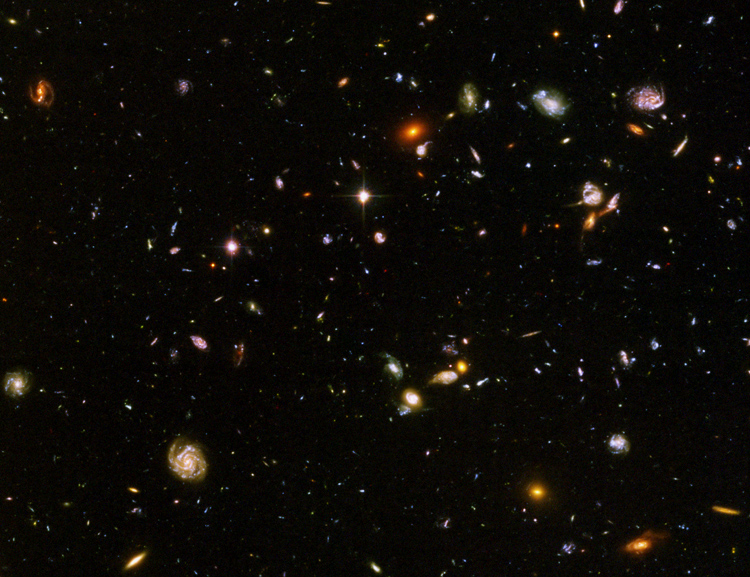
Credit: NASA
2230
Antimatter-fueled starships
One of the many benefits resulting from the growth of AI has been the rapid design and prototyping of commercial space vehicles, made possible through evolutionary algorithms. The fastest of today's spacecraft are now capable of sustained travel at between 0.9 and 0.99c (90-99% lightspeed). This is fast enough to reach nearby stars within relatively short timeframes.
One of the many benefits resulting from the growth of AI has been the rapid design and prototyping of commercial space vehicles, made possible through evolutionary algorithms. The fastest of today's spacecraft are now capable of sustained travel at between 0.9 and 0.99c (90-99% lightspeed). This is fast enough to reach nearby stars within relatively short timeframes.
The vessels are typically built around a hollow "ring" containing matter-antimatter fuel - purposefully collided to release vast amounts of energy - which is then trapped and converted into thrust. This energy is also used to maintain stability and create fields around the craft, protecting it from meteoroids and other hazards.
Huge numbers of deep-space missions are now underway, including trips to Earth-like planets within 100 light years. Most of these ships are unmanned, but a small percentage contain human pilots. These are invariably transhumanswith heavily modified bodies and minds - better able to cope with these journeys than "regular" humans.
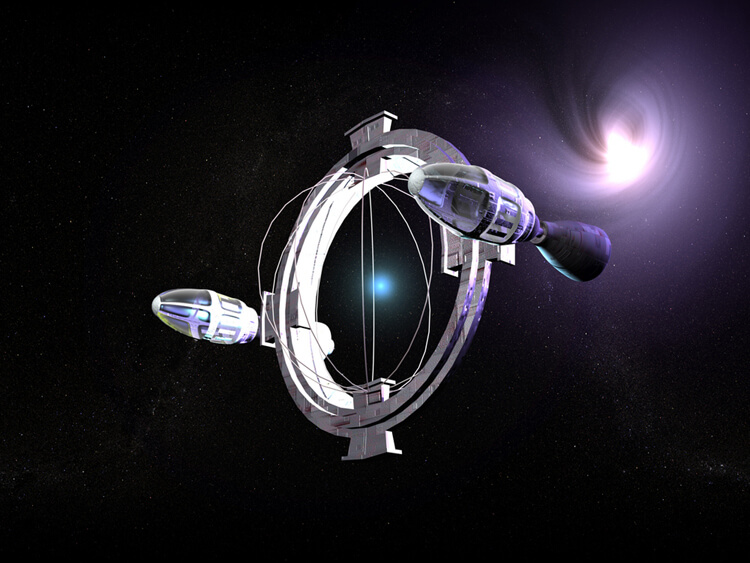
A typical private commercial space vessel of the early 23rd century.
2240
Christianity is fading from American culture
After centuries of decline, Christianity is on the verge of disappearing from American culture. The vast majority of the US population is now atheist, or agnostic.*
After centuries of decline, Christianity is on the verge of disappearing from American culture. The vast majority of the US population is now atheist, or agnostic.*
This same trend was witnessed in Europe at a far earlier date. However, religion was so deeply embedded in the American psyche that it took substantially longer to reach this stage.
Click to enlarge.
2250-2299 Contents
2250
Humanity is becoming a Type 1 civilisation on the Kardashev scale
By this date, practically all of the Earth's natural energy is being captured and harnessed in some way.*
By this date, practically all of the Earth's natural energy is being captured and harnessed in some way.*
Vast swathes of land, sea and atmosphere have been transformed into a series of enormous power grids using wind, solar, hydroelectric and geothermal technologies. These are supplemented by fusion and antimatter, along with wholly new forms of energy production that were unknown to scientists in previous centuries.
In space, a geodesic network of stations is now in orbit. This cluster is organised in such a way that it harvests every ounce of incoming solar radiation being reflected back into space. In terms of raw electrical power, the total converted energy is equivalent to over 52 petawatts (PW).* Each vessel acts as a node within a gigantic web, completely encircling the planet. The nodes produce attractive forces between each other, forming an invisible "shield" which absorbs solar radiation from literally the entire globe.
This technology has the added benefit of stabilising the Earth's climate, since the network can be adjusted at certain points to control the amount of heat getting through. These variations allow rain to fall whenever and wherever necessary, while hurricanes and other such phenomena are easily controlled.
The vast amount of energy now available to humanity is creating enormous wealth and prosperity. Earth's physical infrastructure is revolutionised - with teleporters available for civilian use, gargantuan skyscrapers reaching miles into the sky, and material needs practically eliminated.
However, even greater breakthroughs have been occurring in cyberspace, which has supplanted physical reality completely, for many people. Virtual worlds are now of such grandeur and ingenuity that they far surpass anything in the real world. These digital environments run at speeds considerably greater than real time - further accelerating the pace of innovation.
From this point onwards, the only way for civilisation to gain more energy is to expand outward into space.*Massive colonisation efforts are now underway. Asteroid mining dominates the economy of the inner Solar System, while hydrogen and helium are being siphoned from the gas giants. Meanwhile, terraforming of Mars has passed a critical stage, with bacteria and lichen beginning to appear on the surface.
Interstellar travel increases greatly during this time. The settlements on Alpha Centauri, Barnard's Star and Wolf 359 are inhabited by thousands of humans and machines by now, while the most distant exploratory craft have reached over 50 light years from Earth. Faster-than-light travel is proving to be more difficult to achieve than previously thought, however, with maximum velocity still limited to 0.99c.
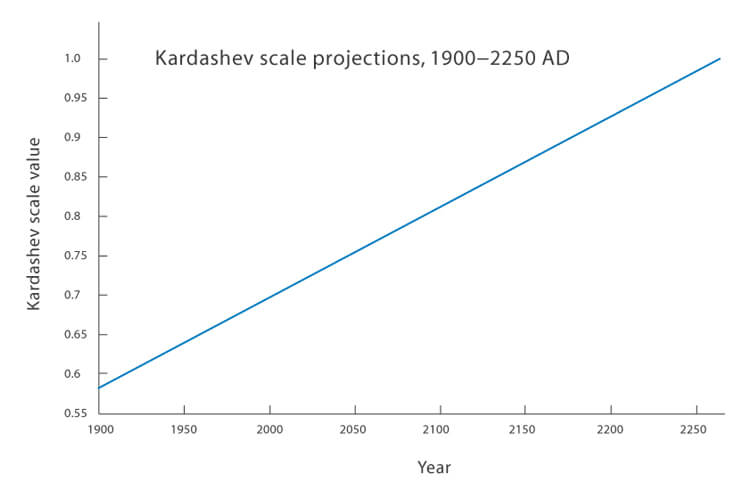
2260
Accelerated development of the Solar System
With humanity shifting its focus beyond Earth, a veritable gold rush is taking place throughout the Solar System. Countless technological and engineering marvels are now possible in space, aided by the vast growth of AI which is dominating planetary and interplanetary government.
With humanity shifting its focus beyond Earth, a veritable gold rush is taking place throughout the Solar System. Countless technological and engineering marvels are now possible in space, aided by the vast growth of AI which is dominating planetary and interplanetary government.
On Mercury, colonies roll around the equator on giant train tracks - keeping pace with the planet's rotation so that they are always kept in the "terminator" zone. This ensures that the Sun never rises fully above the horizon, maintaining the optimum temperature and brightness.*
On Venus, the first stage of a massive terraforming effort has begun. Automated craft are being sent to water-rich comets, redirecting them into the planet's upper atmosphere, while genetically-engineered extremophile bacteria are being seeded on the ground. Due to the much denser and more hostile atmosphere, this process is much slower than the efforts on Mars. However, with many people achieving practical immortality, human endeavors are becoming increasingly focussed on the long term. Already, there are citizens buying up land and real estate on the surface in preparation for the centuries and millenia ahead.
Earth's own moon is the most heavily populated of all the colonies. It now has millions of permanent inhabitants. Entire cities have grown up around the original Apollo landing sites. Huge numbers of ordinary citizens are involved in the expansion of infrastructure and technological research.
Mars recently declared its independence from Earth. Its surface is now dotted with tent cities and criss-crossed with a hyperfast, automated rail network. The terraforming operation is proceeding on schedule, with several giant orbital mirrors now in place.
Hundreds of asteroids are now being mined - both in the main-belt and the Trojan region. Massive advances in nanotechnology and related fields enable these rocky bodies to be stripped literally atom-by-atom, so that nothing goes to waste. Precious metals are harvested for use in hi-tech industries, while volatiles such as water can be supplied wherever needed. Some of these minor planets are being hollowed out, their interiors converted into enormous power plants, habitats or scientific stations.
Meanwhile, Jupiter is gaining a steady influx of prospectors - led by cyborgs and non-biologicals, including some with 100% nanotechnology-based forms. These individuals are better adapted to the radiation belts and harsh environmental conditions on Ganymede, Io, Europa et al.* Whilst the moons are being exploited for their metals, minerals and water ice, Jupiter itself is being mined for its rich gas resources. A number of floating cities and gigantic refineries are beginning to appear in the upper atmosphere.
A similar situation is occurring in the Saturnian system. Its largest moon Titan now has a permanent base, while Enceladus is showing great potential as a future water source for the outer Solar System.* The rings of Saturn now have luxurious hotels orbiting around them, offering spectacular views of the planet. Guests can venture outside and drift among the slowly moving ice fragments.
Even the distant planets of Uranus and Neptune have gas miners now - though development is somewhat slower this far out, the lightspeed barrier making communication and logistics rather cumbersome for now.
Although Pluto and the Kuiper Belt have been largely ignored in terms of commercial development, unmanned probes have fully catalogued them by now - paving the way for future exploitation and development.
The number of citizens making the journey to neighbouring star systems is growing exponentially during this time.
2280
Microbial life is confirmed on an exoplanet
Half a century of antimatter propulsion has allowed much of the local stellar neighbourhood to be explored. By the end of the 23rd century, the first direct confirmation of alien life is obtained.
Half a century of antimatter propulsion has allowed much of the local stellar neighbourhood to be explored. By the end of the 23rd century, the first direct confirmation of alien life is obtained.
After surveying hundreds of worlds, automated probes uncover a unicellular organism within 50 light years of our solar system. This lifeform reproduces via binary fission. It has an internal chemical structure that is remarkably similar to DNA, suggesting that this form of replication may be quite common throughout the Universe. It exists on a warm, wet planet with a G-type star as its parent.** This system also includes gas giants in the outer regions, offering some protection from comets and other incoming bodies.
The impact of this discovery is less profound than it might have been in previous centuries. Religion has already vanished from many societies, for example. Science and technology in general have advanced so far - in so many new ways - that previous "wonders" of the Universe are beginning to diminish in significance: even the possibility of alien life. Though still hailed as a landmark discovery, the emotional aspect of this and other breakthroughs has waned considerably, as human thought and endeavour become ever more computerised, logical and machine-like. Transhumans and robots now make up the bulk of the mainstream population.
Efforts are now underway to uncover more advanced and complex life. The potential for contact with intelligent alien races is now being taken seriously for the first time.
The Far Future
2300
Superhuman powers are available to common citizenry
The nanotechnology of recent decades has conferred powers to ordinary citizens that would be considered superhuman by 21st century standards. A typical person of today could perform feats regarded as Godlike to denizens of earlier times.
A suitably upgraded individual - if transported back to the year 2000 - would be impervious to weaponry and nearly impossible to contain. They could transform their body into a seemingly infinite variety of forms depending on the situation encountered.*
If trapped in a maximum security prison, for instance, they could alter their own molecular structure, allowing them to walk through walls.* They could broadcast electromagnetic pulse waves to disable electronic devices or cripple vehicles and other objects. They could halt incoming bullets. They could sprint at lightning speed and cross a variety of dangerous terrain: even molten lava would present no obstacle to them. If necessary, they could levitate from ground level to the roof of a skyscraper in seconds. They could turn themselves invisible, or morph into another person entirely, or stretch their limbs like elastic.
In many ways, they would resemble a comic book superhero or video game character.
They could manipulate their environment in various ways too – generating enough body heat to light a fire, for example, or turning inanimate objects into advanced nanotechnology tools, or modifying the properties of liquids. They could heal a wounded person just by touching them. They could read thoughts and emotions, or extract recent memories.
If standing near others of their kind, they could link and combine their powers to even greater levels – harnessing the power of thunderstorms, for example, or lifting objects weighing thousands of tons.
Their sensory capabilities would be phenomenal. This 24th century person could view individual atoms with the naked eye; or if they wanted to, use their telescopic vision to see distant astronomical objects. They could hear a whisper from miles away, or filter specific voices from a cacophony of background noise. They could determine a precise chemical composition just by tasting, touching or smelling it.
Due to their various biotechnology aids and physical upgrades, they would never require sleep. They could even survive without food and water - living instead off the energy of their surrounding environment, which would be absorbed into their photosynthetic, piezoelectric skin. This same external layering would keep them at peak levels of physical performance, as well as shielding them from the elements.
In fact, many citizens of today have abandoned their homes altogether and taken to a nomadic lifestyle, for this and other reasons. Often, a "home" of today is little more than a small booth or alcove in the street, where a person can temporarily recharge and recuperate, or utilise the greater powers of the net. Even a person's body is often temporary, as they shift between various real world and digital environments. Much of the Earth is now being transformed into a gigantic computer grid where individuals can physically "plug" themselves in.
Not everyone has opted to make this transition. Even now, there are segments of society which are adamant in maintaining a natural, minimally upgraded human body. These people are a definite minority, however, given the enormous benefits offered by transhumanism.
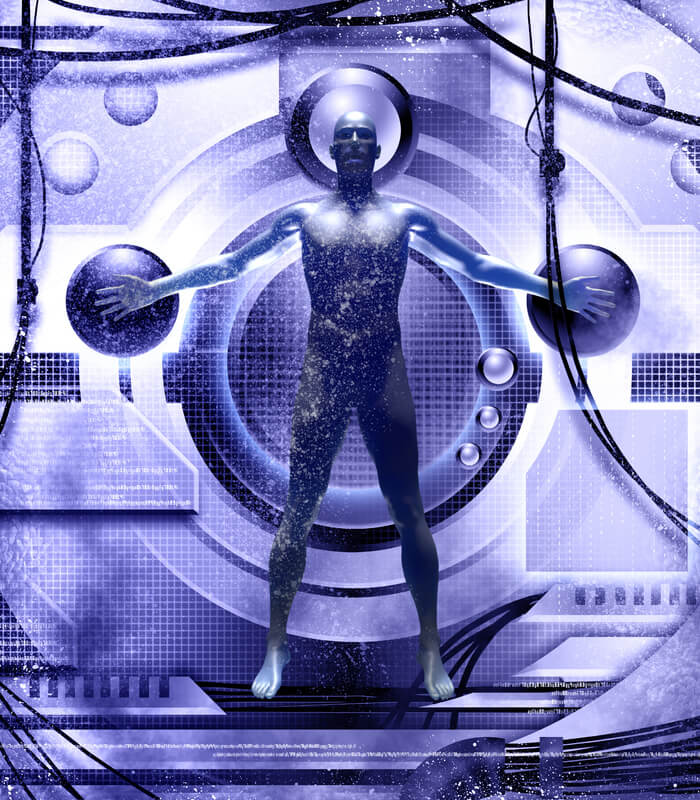
© Antony Papantoniou | Dreamstime.com
2350
Progress with Mars terraforming
The first lakes and seas are beginning to form on Mars.
In the lowest altitude regions, a variety of plant life has been introduced. The air pressure and temperature is even high enough for certain arthropods and insects to survive.
Open air exploration for humans is still limited to those with cyborg bodies, however.
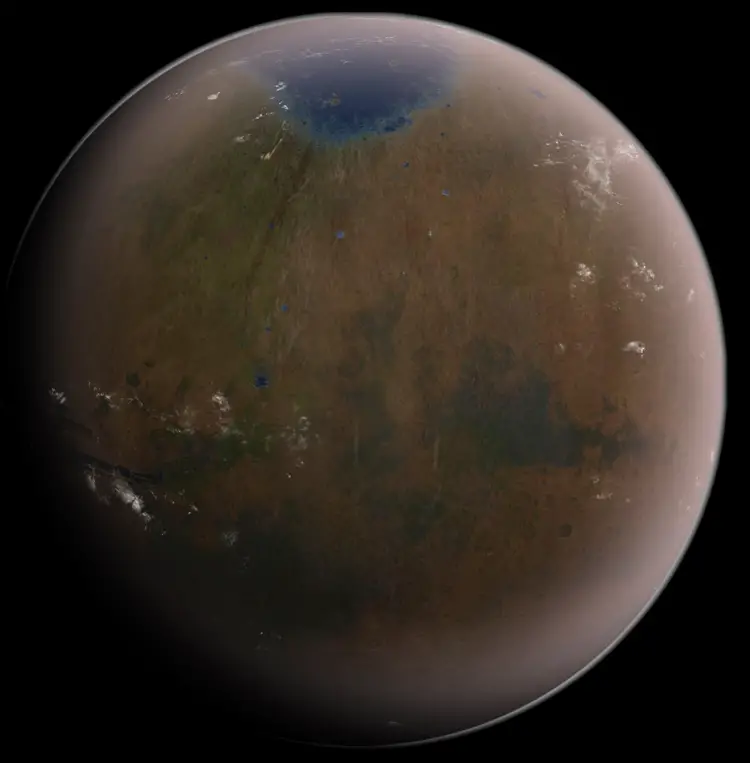
Credit: Daein Ballard
2500 AD
Mars has been terraformed
By the end of the 25th century, the Red Planet has been turned from a cold, dead world into a lush, Eden-like paradise. This monumental achievement has been the result of government, business and public collaboration on a planet-wide scale. It has created whole new industries, countless millions of jobs and undreamed of technologies.
Costing many trillions of dollars, the project was initiated in the early 22nd century. From the outset, it faced major hurdles. Aside from the sheer scale of geo-engineering an entire world, there were political, social and cultural issues too. Many of the early settlers on Mars actually wished for it to remain in its raw, primeval state. Some of them had an almost spiritual connection to the planet. Like certain environments on Earth, they believed it held an intrinsic worth and unique value that should never be replaced. To better it with manmade artificial processes would somehow make it less natural, less real.
These "Reds", as they came to be known, were a potent force during the establishment of the early Martian government.* They were a thorn in the side of planning authorities, who faced many protests and demonstrations, along with direct sabotaging of industrial activities from some of the more extreme individuals.
On the opposing side of this debate were the "Greens", mostly consisting of corporate interests.* They included a greater proportion of cyborgs and heavily upgraded humans - these became adapted to the environment of Mars at an earlier stage and were able to survive in lower air pressures.
Over time, the power and influence of the Greens began to dominate. Improved security measures were introduced, guarding much of the infrastructure and terraforming equipment from attack.
Giant solar mirrors were placed in orbit. Measuring several kilometres across, these reflected and focussed the Sun's rays onto the poles.
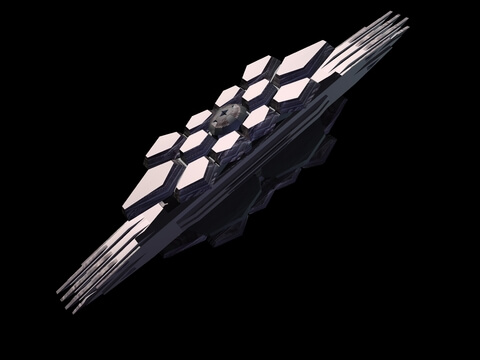
© Luca Oleastri | Dreamstime.com
Other projects included the seeding of bioengineered "extremophile" bacteria. These began converting CO2 into oxygen. Vast swarms of nanobots were later introduced, accelerating this process and offering a greater degree of control, since they were fully programmable. They also helped to produce nitrogen, as well as regulating the overall composition of the atmosphere.
A series of enormous "heat factories" were constructed too. These belched out huge amounts of CO2 - which of course was converted by the bacteria and nanobots - but also had the effect of raising air pressure.
To increase the volume of water on Mars, various comets and ice-rich asteroids were manoeuvred into orbit. These were made to slowly burn up as they descended, without impacting on the ground and causing damage.
This still left the problem of Mars' lack of a magnetosphere, which exposed the surface to harsh ultraviolet radiation. Giant superconducting rings were placed around the latitude lines - focussed mainly on the equator - and buried deep below ground. These were thousands of miles in length and took many decades to construct, but were sufficient to create an artificial magnetic field.
By the early 2200s, frozen lakes and ponds were beginning to form in some regions. This was followed decades later by successful growing of the first lichen and mosses. Entire seas and oceans began to appear in the 2300s, along with the first trees and other flora - plus certain insects too.
A series of chain reactions and positive feedback loops began to accelerate the process, fueled by even greater technological advancements. By the 2400s, a whole series of animals including birds, fish and mammals were being introduced. Eventually, it was declared safe for unaided humans to walk on the surface of Mars. Humanity had created a second Earth.
Flash animation by Will Fox, using images produced by Daein Ballard.
2600 AD
Plastics and other waste products are disappearing from Earth's biosphere
Most of the plastics, tin cans and other waste products from the 20th-21st centuries have decomposed by now. They caused significant harm to the environment during their time on Earth - injuring countless birds, fish and other animals.* Subsequent generations of these materials were produced in ways that minimised their impact.*
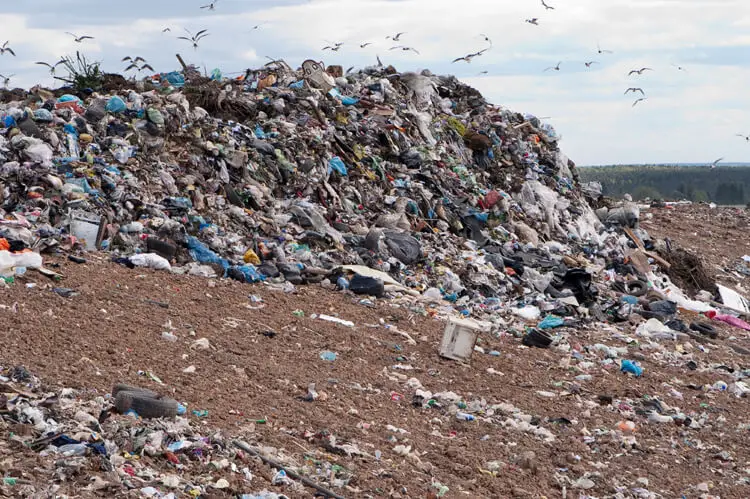
© Marpalusz | Dreamstime.com
2700 AD
Venus has been terraformed
By now, Venus has been transformed into a habitable, Earthlike world. Its entire orbit was shifted, bringing it closer to the "Goldilocks Zone" enjoyed by Earth, while its day-night cycle was accelerated from 117 days to 24 hours. This form of geo-engineering - changing the movement of an entire planet - only recently became possible.
Comets were also redirected from the Oort Cloud. These were guided through the solar system and into the upper atmosphere of Venus, releasing vast quantities of water.
Other techniques involved the capturing and removal of CO2 (achieved by "beaming" it away into space), as well as seeding the ground with nanobots, which absorbed and converted toxic gases into breathable oxygen.
With lush tropical oceans, Venus now has two large, dominant landmasses - Aphrodite and Ishtar - along with a number of smaller subcontinents and islands. The average surface temperature has stabilised at around 30°C.
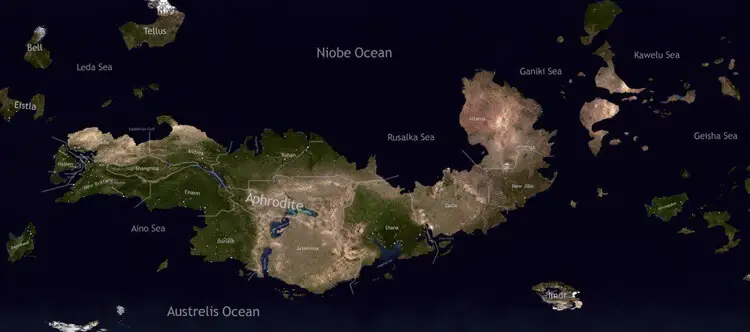
2880 AD
The asteroid 1950 DA is passing very close to the Earth, possibly on a collision course
This kilometre-sized asteroid was first discovered in 1950. It was observed for 17 days, then lost until 2000 due to uncertainties in the orbit. In 2001, new radar and optical measurements confirmed a mean diameter of 1.1 km with a very fast rotation period (2 hours), an orbital velocity of 21.3 km/s and a dense composition of nickel-iron.
It was also found to have a potentially very close approach to the Earth, on 16th March 2880. Scientists estimated a 1 in 300 chance that the asteroid would strike the planet on this date - the highest probability of any known asteroid at the time. Were such an impact to occur, it would be catastrophic to civilization, given the size and velocity of 1950 DA. If landing in the ocean, coastlines would be hit by 200 ft tsunamis, running inland over 4 km. There would be major effects on the climate and biosphere.
However, technology is so advanced by 2880 that the asteroid can easily be moved to a safe orbit, if required.
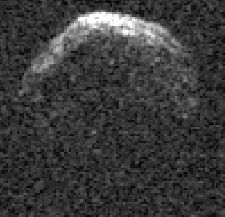
Credit: NASA
3000 AD
Purely biological humans are typically 7ft tall now, with lifespans of 120+*
For centuries now, the technological singularity has produced enormous wealth and prosperity throughout the solar system. Across-the-board improvements in healthcare, education and living standards have led to humans evolving into a race of giants - 7ft tall, muscular and highly athletic, with lifespans of 120+. Note that this lifespan refers to purely biological (non-cyborg) humans, who comprise a small minority by now. The vast majority of citizens have opted for genetic engineering and biotechnology upgrades which offer practical immortality.
3100 AD
Humanity is becoming a Type 2 civilisation on the Kardashev scale
The exponential growth of AI is allowing the manipulation of matter on scales barely dreamed of before. The largest structure now being built in space is a "Dyson Sphere".* This hollow shell is of such gargantuan proportions that its radius stretches from the Sun to beyond the orbit of Jupiter.
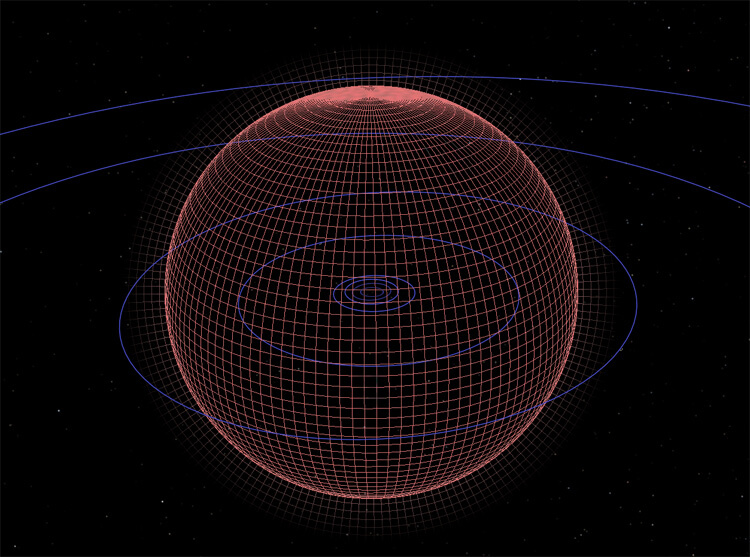
Under the direction of a Godlike superintelligence, vast swarms of automated, self-replicating ships are building it - using material from the asteroid field, Kuiper Belt and Oort Cloud.
The sphere's primary purpose is to harvest literally all of the energy output from the Sun: some 386 yottajoules (YJ) per second.* However, it also serves the function of shielding our inner solar system from gamma rays and other incoming hazards. Even the potential possibility of alien invasion has been taken into consideration during the sphere's design.
The interior walls have a gravitational field of 1G and are made from wholly new states of matter that were unknown to science in previous centuries. These can withstand the colossal tensile forces required to maintain structural integrity. This curved, impossibly large surface - equivalent to billions of Earths - is becoming a habitat for many sentient lifeforms, with portions being terraformed and given a stable atmosphere, oceans and landmass. A sizeable percentage of citizens are now migrating to these strange artificial worlds. This includes a diverse mix of biological humans, as well as transhumans, synthetics, clones, androids, sentient animals and other communities.
A series of additional Dyson Spheres are being constructed around neighbouring star systems - some even larger.
Having begun its journey to the stars in the 22nd century, humanity is reaching a landmark in its colonisation of space. A region nearly 1,000 light years in radius has now been explored (or about 2 percent of the total length of our galaxy). The light speed barrier has yet to be exceeded, however.
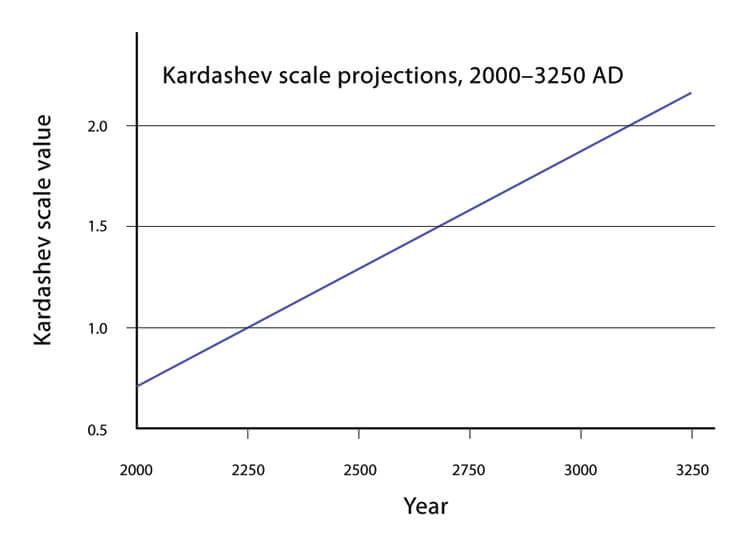
3500 AD
Polar reversal of the Earth
Polar reversals have occurred many times before in Earth's history - typically every 300,000 years. The last time was around 780,000 BC. This means the planet is long overdue for such an event.
From 1900 onwards, the intensity of Earth's magnetic field was known to be declining by six percent each century. By 3500, the poles are beginning to completely reverse.*
Charged particles from the Sun affect satellites and other near-Earth vessels which lack adequate protection. However, plants and animals on Earth are unaffected. During the reversal, the solar wind induces a sufficient magnetic field in the ionosphere, temporarily shielding the surface in the absence of the normal magnetic field.*
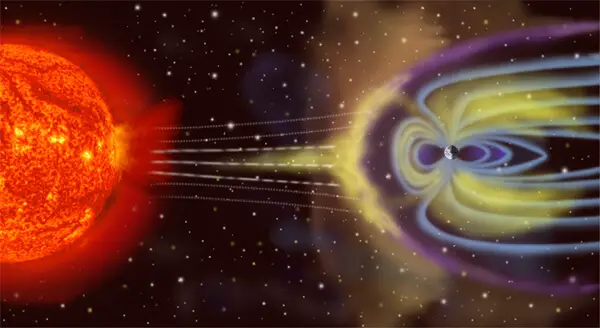
Credit: NASA
Construction of the Solar Ring has been completed
The first particle accelerators built by man were small, terrestrial-based devices. In the 20th and 21st centuries, they were only a few dozen kilometres in circumference, resulting in energies of a few tera-electronvolts (TeV).
By the middle of the 4th millenium, however, an accelerator covering the entire perimeter of our solar system has been constructed.
This becomes the largest scientific experiment in history - powerful enough to accelerate particles to a state known as the Grand Unification Energy. This allows the very earliest conditions of the observable Universe to be simulated. The electromagnetic, weak and strong nuclear forces (three of the four fundamental forces in the Universe) can be observed for the first time at precisely the same strength: becoming effectively different aspects of a single force. Quarks and electrons, too, can be seen as essentially the same, achieving another unification.*
4000 AD
Computer science is reaching its ultimate potential
The biological and technological descendants of humanity are nearing the perfection of computer science.*Hardware and software is becoming the absolute fastest, most efficient it can ever possibly be, within the known laws of physics. New applications can be generated instantly and automatically, for almost any purpose. From this point onwards, computer science becomes obsolete as a field of study - the only "unknowns" left for scientists to discover will be in other areas of science.*

Credit: Tiberiu Stan
Beyond 10,000 AD...
10,000-15,000 AD
The hypernova of Eta Carinae is affecting our region of the galaxy
Eta Carinae is among the largest, most volatile stars in our galaxy. Its temperature is so high that it is unable to hold onto its own gas, with constant streams being ejected from the surface. It first came to attention in 1843 when it flared to magnitude -0.8, becoming the second brightest star in the night sky.
It subsequently died down, before brightening again in the late 1990s. This fluctuation continues - with periodic flaring and dimming - until one day the inevitable happens. Unable to maintain its cohesion, Eta Carinae erupts into one of the deadliest known forces in nature: a hypernova.
For a brief period, this colossal explosion outshines the entire galaxy. It is bright enough to be visible during daytime on Earth, while at night, it is similar to the full moon.*
Of much greater concern, however, are the lethal jets of gamma radiation released by the dying star. These begin to shoot outward, at such high energies that even systems thousands of light years away are affected. As a result, numerous planets in our region of the galaxy undergo mass extinctions during this time.*
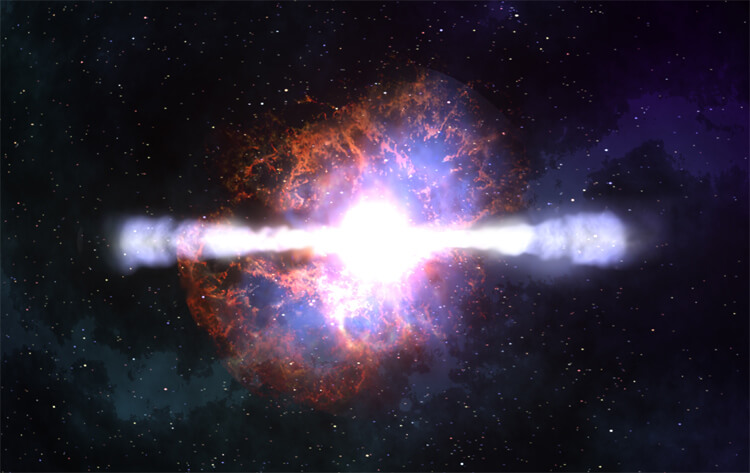
Credit: NASA/GSFC/Dana Berry
22,000 AD
The Chernobyl disaster site becomes fully safe
The Chernobyl explosion, which occurred in 1986, was the worst nuclear accident in history - affecting tens of thousands of square kilometres of land. Radiation at the centre of the former disaster zone has decayed to negligible levels by now.*
In any case, the original buildings on site have long since disappeared and indeed, Earth itself would be unrecognisable today.
 Credit: CIA Factbook
Credit: CIA Factbook35,000 AD
Ross 248 becomes the closest star to our Sun
Alpha Centauri was previously the closest star. Ross 248 is a red dwarf, with approximately 12% of the Sun's mass and 16% of the Sun's radius, but only 0.2% of its luminosity. However - it is also a "flare star", that periodically undergoes sudden, dramatic increases in brightness for a few minutes.
In 2010, Ross 248 was 10.3 light years from Earth, with a radial velocity of -81 km/s. By 35,000 AD, it is closer than Alpha Centauri. It reaches its closest point in 38,000 AD - moving to within 3.1 light years - before receding again, becoming further from the Sun than Alpha Centauri in 44,000 AD.
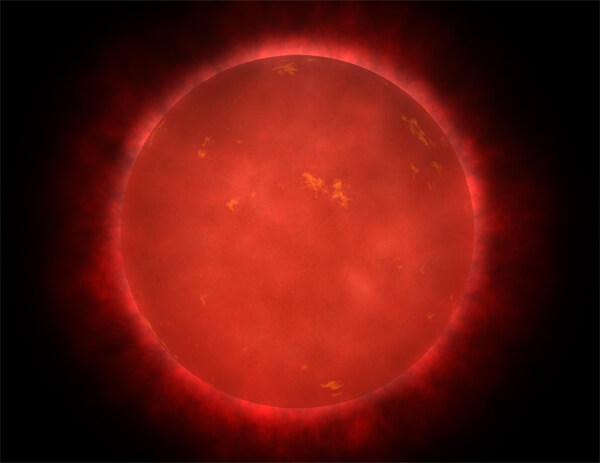
Credit: NASA
52,000 AD
The KEO time capsule re-enters the Earth's atmosphere*
KEO was a time capsule launched in 2012 and intended to orbit Earth for 50,000 years – the same length of time that had elapsed since early humans began drawing in cave walls.
The project was supported by the UN Educational, Scientific and Cultural Organization (UNESCO), as well as the European Space Agency (ESA) and other institutions.
The public were invited to contribute messages.* These were encoded in glass-made, radiation-resistant DVDs, along with instructions to future generations on how to build a DVD reader. Samples of human blood, earth, air and seawater were also placed on board.
The capsule itself is a hollow sphere, 80cm in diameter. The sphere is engraved with a map of Earth and surrounded by an aluminium layer, a thermal layer and several layers of titanium, intertwined with vacuum. The sphere is resistant to cosmic radiation, atmospheric re-entry and space junk impacts.
Placed into orbit 1,800 km high, the satellite's altitude has slowly degraded by a few dozen metres each year. As it finally re-enters the atmosphere, its thermal layer produces a bright, artificial aurora to signal its return.
296,000 AD
Voyager 2 is approaching Sirius
Voyager 2 was an unmanned space probe launched in 1977 to investigate the outer planets of the solar system. Identical in form and function with its sister craft, Voyager 1, it was launched on a slower, more curved trajectory that allowed it to be kept in the plane of the Ecliptic. This enabled it to be sent on to Uranus and Neptune by means of utilising gravity assists during its fly-by of Saturn in 1981 and of Uranus in 1986.
By 2010, Voyager 2 was around 92 AU (13.75 billion km, 8.5 billion miles, or 0.001443 ly) from the Sun, deep in the scattered disc, and traveling outward at roughly 3.26 AU per year.
The probe survives for thousands of years in the emptiness of interstellar space. It eventually passes by Sirius, having covered a distance of over 25 trillion miles.* Sirius is the brightest star in the sky when viewed from Earth.

Credit: NASA
1,000,000 AD
Planet-sized computers are dominating the Local Group; AI controls all governmental and other systems; the descendants of humanity are a Type 3 civilisation on the Kardashev scale
Purely biological (non-cyborg) humans are exceedingly rare now. The very few which do remain comprise only a tiny fraction of the total sentient minds in existence. Though free to come and go as they please, they have practically zero influence in any governmental systems on Earth or elsewhere, being regarded as wholly subordinate to the AIs and other entities. As a species, homo sapiens has continued to evolve over time. This has led to a 100% increase in cranial size, a near-total absence of hair, a further elongation of limbs, and an average lifespan of several hundred years.
The vast majority of humans have long since abandoned these primitive biological forms, making the transition to machines or other substrates, achieving practical immortality. The entire Milky Way galaxy has been explored by these transhumans and their sentient ships. Faster-than-light travel is now possible using Alcubierre drives, which cause the fabric of space ahead of a spacecraft to contract, while the space behind it expands. This bypasses the laws of relativity, allowing travel to even neighbouring galaxies such as the Andromeda and Triangulum.
Planet-sized computers are being constructed throughout the Local Group of galaxies, with every available resource going towards their production. All of the "dead" worlds, comets, moons and asteroids considered uninhabitable are being converted into these machines, forming a vast network millions of light years across space. Each computer is capable of instant communications with any other, regardless of distance.
Despite all this, no advanced alien intelligences have been contacted yet. However, ancient ruins have been uncovered on a number of worlds - indicating advanced civilisations at some point in the distant past; and there are hundreds of planets with rich ecosystems brimming with diverse plant and animal life. Most of the fauna being discovered is small and insect-like, but some is more developed, with intelligence comparable to higher mammals such as dolphins, monkeys and cats.
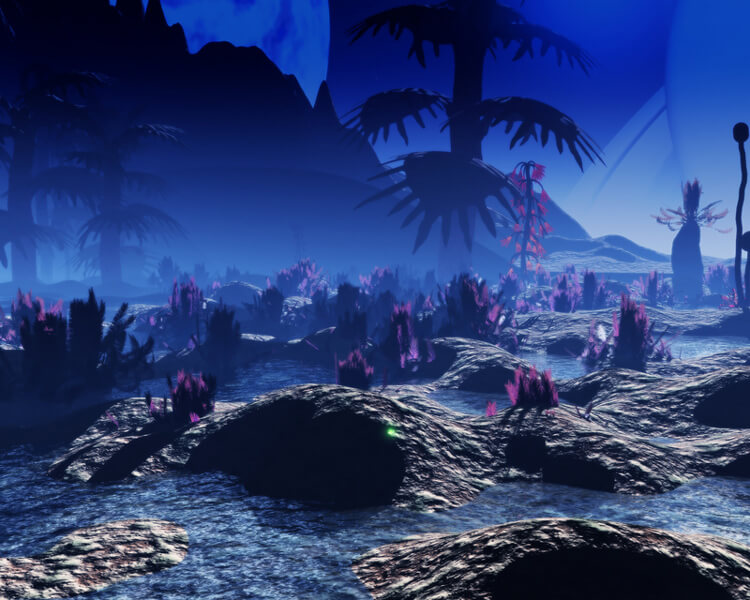 © Randall Mikulas | Dreamstime.com
© Randall Mikulas | Dreamstime.comMost of the biological (non-cyborg) humans are avoiding the core regions in each galaxy, which are filled with extremely high concentrations of gamma radiation, blackholes and other hazards - dangerous even with the technologies and protections of today.
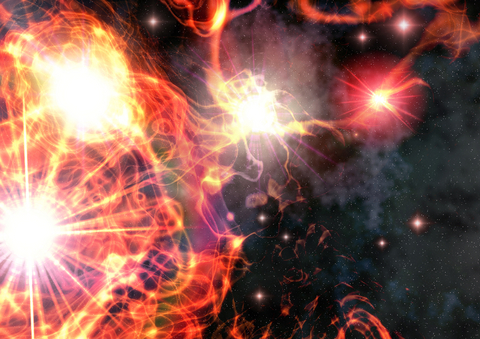
© Luca Oleastri | Dreamstime.com
1,400,000 AD
The Oort cloud is being disrupted by the approach of Gliese 710
The orange dwarf star, Gliese 710, is passing within 1.1 light years (70,000 AU) of the Sun. This is close enough to disrupt the Oort Cloud surrounding our solar system. A shower of comets is now heading in-system.
At its closest approach, Gliese 710 will be a first-magnitude star when viewed from Earth: one of the brightest in the night sky.
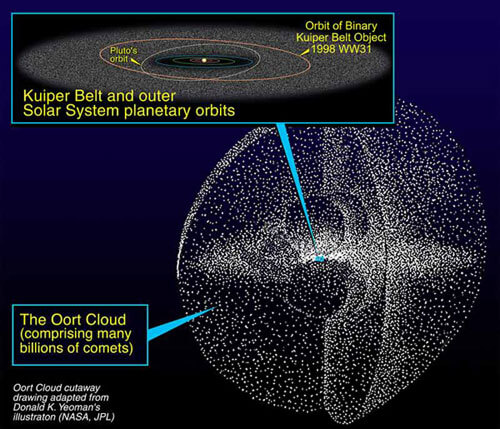
Credit: NASA
2,000,000 AD
Pioneer 10 is approaching the Aldebaran system
Pioneer 10 was the first space probe to travel through the asteroid belt and to directly observe Jupiter, which it passed by in 1973. After completing its mission, it began heading in the direction of Aldebaran - a red giant star located 65 light years away in the constellation Taurus.
The final contact with the probe was made in 2003, when a very weak signal was detected from the craft, 12 billion kilometers (7.5 billion miles) from Earth. An attempt at contact in 2006 was unsuccessful.
After travelling at roughly 2.6 AU per year, Pioneer 10 begins to approach the Aldebaran system in 2,000,000 AD.*
Attached to the probe is a pictorial message, in case of interception by extraterrestrial life. This plaque shows the nude figures of a human male and female, along with symbols that are designed to provide information about the origin of the spacecraft.
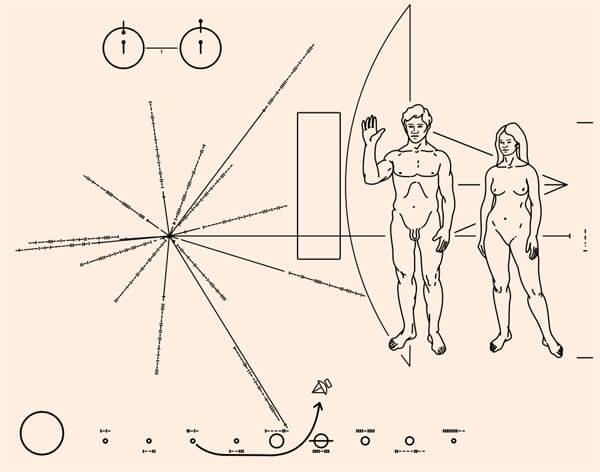
Credit: NASA
4,000,000 AD
Pioneer 11 is approaching the Lambda Aquilae system
Pioneer 11 is the sister craft of Pioneer 10. Launched in 1973, it completed a successful flyby of Saturn in 1979, before heading out to interstellar space, travelling in the opposite direction of Pioneer 10.
After four million years, it passes by Lambda Aquilae, a blue-white B-type main sequence dwarf star, approximately 125 light years from Earth.* Like its sister, Pioneer 11 carries a plaque with a message from humankind.
7,600,000 AD
Phobos is ripped apart by Mars' gravity
Phobos is the largest and closest of the two moons of Mars. Because its orbital period is shorter than a Martian day, tidal deceleration has been decreasing its orbital radius at the rate of about 20 metres (66 ft) per century.
By this date, it has passed the Roche limit - the distance within which a celestial body, held together only by its own gravity, will disintegrate due to a second body's tidal forces exceeding the first's gravitational self-attraction.
Phobos begins to break apart. It gradually becomes a ring system over the following 3 million years, with many of these fragments impacting upon Mars itself.*
Neptune's largest moon - Triton - will share a similar fate.
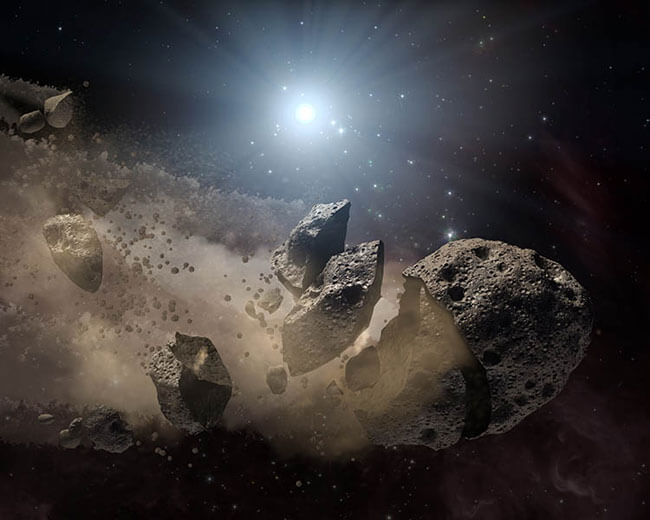
Credit: NASA / JPL
10,000,000 AD
T Pyxidis is threatening Earth with lethal levels of gamma radiation
T Pyxidis is a binary star system in the constellation Pyxis. It contains a sun-like star and a white dwarf. Because of the strong gravitational effect of the white dwarf, it draws matter from the other star which causes periodic thermonuclear explosions (so-called novae) to occur.
Around this time, it reaches the so-called Chandrasekhar Limit, causing it to undergo an instantaneous collapse that completely destroys the star in a Type 1a supernova. This catastrophic event releases 10 million times more energy than a typical nova explosion, or the equivalent of 20 billion, billion, billion megatons of TNT.*
The system is only 3,260 light years away - close enough to affect our solar system. Unless Earth is protected by advanced technology by now, waves of gamma radiation could destroy the ozone layer, leading to mass extinctions.
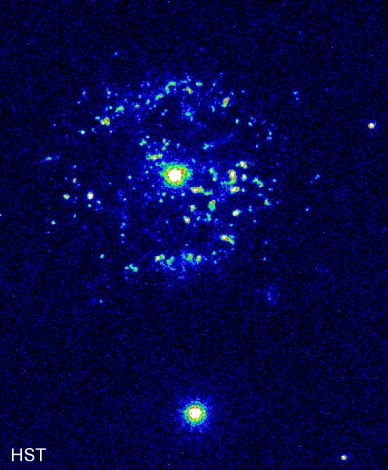
Credit: NASA
Triton’s decaying orbit has led to it breaking up around Neptune, forming a new ring system
That's assuming the moon still exists in a form we would recognise. The descendants of humanity may have converted its raw mass into artificial structures by now. Even Neptune itself may no longer exist – the planet’s hydrogen and helium may have been siphoned off for use in starships and industrial processes.
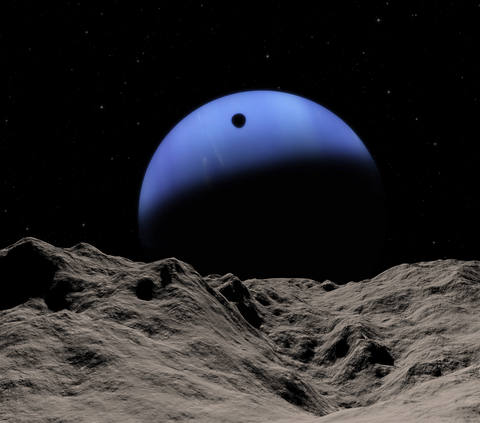
© Diego Barucco | Dreamstime.com
30,000,000 - 40,000,000 AD
At some point during this period, an asteroid 10-20 km in size comes on a direct collision course with Earth
Impacts of this size tend to happen every 100 million years or so.* The last such event occurred 65m years ago - resulting in the extinction of the dinosaurs.
If humanity or its descendants are no longer around to protect it, any remaining life on the planet may be in danger of a similar mass extinction during this time.
An impact of this scale would release around 4×1023 joules of energy, equivalent to 100 million megatons of TNT. By contrast, the most powerful man-made explosion in history, the "Tsar Bomba", had a yield of only 50 megatons.
If landing in the ocean, it would produce megatsunamis reaching thousands of feet high.
A cloud of super-heated dust, ash and steam would spread from the crater, as the impactor burrowed underground in less than a second. Excavated material and pieces of the impactor - ejected out of the atmosphere by the blast - would be heated to incandescence upon re-entry, broiling the Earth's surface and igniting global wildfires. Meanwhile, colossal shock waves would spawn global earthquakes and volcanic eruptions. The emission of dust and particles would cover the entire surface of the Earth for several years, possibly a decade, creating a harsh environment for living things to survive. The shock production of carbon dioxide caused by the destruction of carbonate rocks would trigger a sudden greenhouse effect.
Over a longer period of time, sunlight would be blocked from reaching the surface of the earth by the dust particles in the atmosphere, cooling the surface dramatically. Photosynthesis by plants would be interrupted, collapsing the entire food chain.

Credit: NASA
50,000,000 AD
The African continent merges with Europe, forming a new mountain range to rival the Himalayas
As a result of this, the Mediterranean no longer exists. The Red Sea, Black Sea and Caspian Sea have also disappeared. Meanwhile, the Atlantic Ocean has continued to widen, and North Amercia is being distorted with California sliding northward towards Alaska. Southeast Asia is beginning to merge with Australia.
150,000,000 AD
The Atlantic Ocean begins to close
New subduction zones along the eastern coasts of North America and South America have begun to consume the ocean floor separating North America from Africa. The continents are moving back together. Meanwhile, Australia has merged with Indonesia and Antarctica.
225,000,000 AD
Sol completes one galactic year
By now, our Sun has completed another clockwise revolution around the galaxy - the 21st in its lifetime so far.
The Sun's orbit is roughly elliptical, with perturbations due to the galactic spiral arms and non-uniform mass distributions. In addition, the Sun oscillates up and down relative to the galactic plane, around 2.7 times per orbit.
The Sun's passage through the higher density spiral arms has coincided with mass extinctions on Earth, due to increased impact events.
The orbital speed of the Solar System around the center of the Galaxy is approximately 251 km/s.
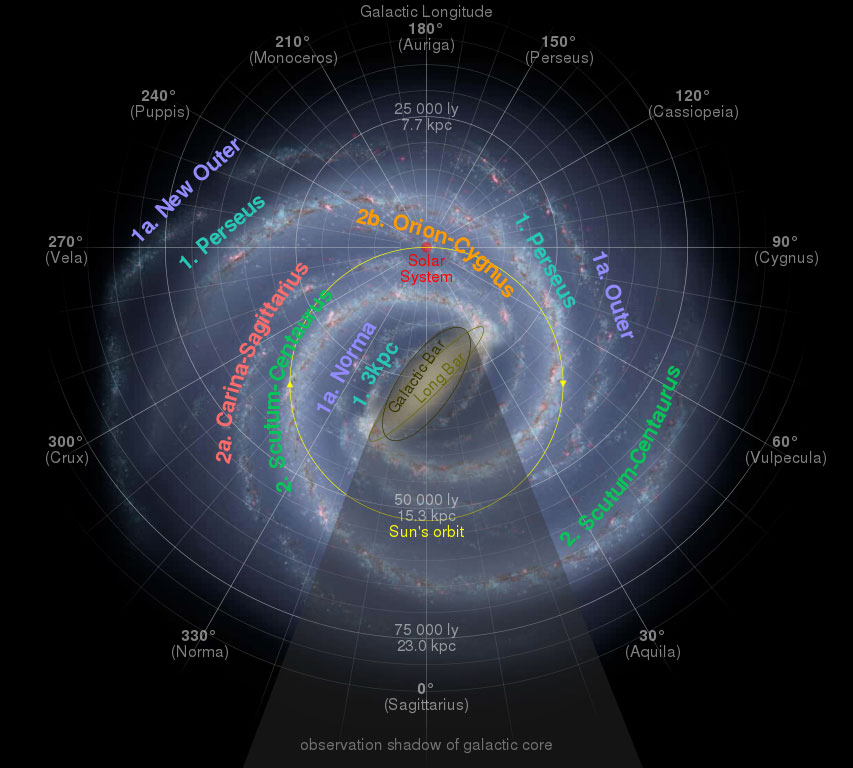
Credit: NASA/JPL-Caltech/R. Hurt
250,000,000 AD
A supercontinent is forming on Earth
The next Pangea, "Pangea Ultima" is forming as a result of subduction of the ocean floor of the Atlantic, beneath eastern North America and South America. This supercontinent has a small ocean basin trapped at its center.
The Sun is becoming noticeably hotter and brighter, raising global temperatures by several degrees. Much of the planet is now covered by deserts.
Of course, this scenario assumes that the Earth hasn’t been altered in some way by the descendants of humanity - possibly including being moved to a new orbit, or converted to an artificial structure. Even the Sun itself may no longer exist in a form we would recognise.
600,000,000 AD
Total solar eclipses are no longer possible on Earth
Due to tidal acceleration, the distance of the Moon from the Earth has been increasing by approximately 3.8cm each year. By 600 million AD, the distance has increased by nearly 23,000 km. At the same time, the Sun has been growing in size by a significant amount.
As a result, the Moon is no longer big enough in the sky to completely cover the Sun's disk, making total eclipses impossible. This is true even when the Moon is at perigee and the Earth is at aphelion.
The reduced gravitational influence of the Moon is affecting Earth's oceans - with smaller waves and less variation in tide heights.
750,000,000 AD
The Sagittarius dwarf galaxy has been absorbed into the larger Milky Way
The Sagittarius dwarf elliptical galaxy (Sag DEG) is a tiny satellite galaxy orbiting the Milky Way. For aeons, it has been stretched and torn apart by the immense tidal forces of its neighbour. By now, it has been completely absorbed into the Milky Way.*
When first discovered, astronomers thought that Sag DEG had already reached an advanced stage of destruction. However, later observations showed that it still had coherence, as a dispersed elongated ellipse. It appeared to be moving in a roughly polar orbit around the Milky Way, reaching as close as 50,000 light years from the galactic core. Computer simulations indicated that stars ripped out from the dwarf would be spread out in a long "stellar stream" along its path. These were subsequently detected.
Sag DEG may have orbited the Milky Way as many as ten times, prior to being swallowed up. Its ability to retain some coherence, despite such strains, would indicate an unusually high level of dark matter in that galaxy.
Click to enlarge.
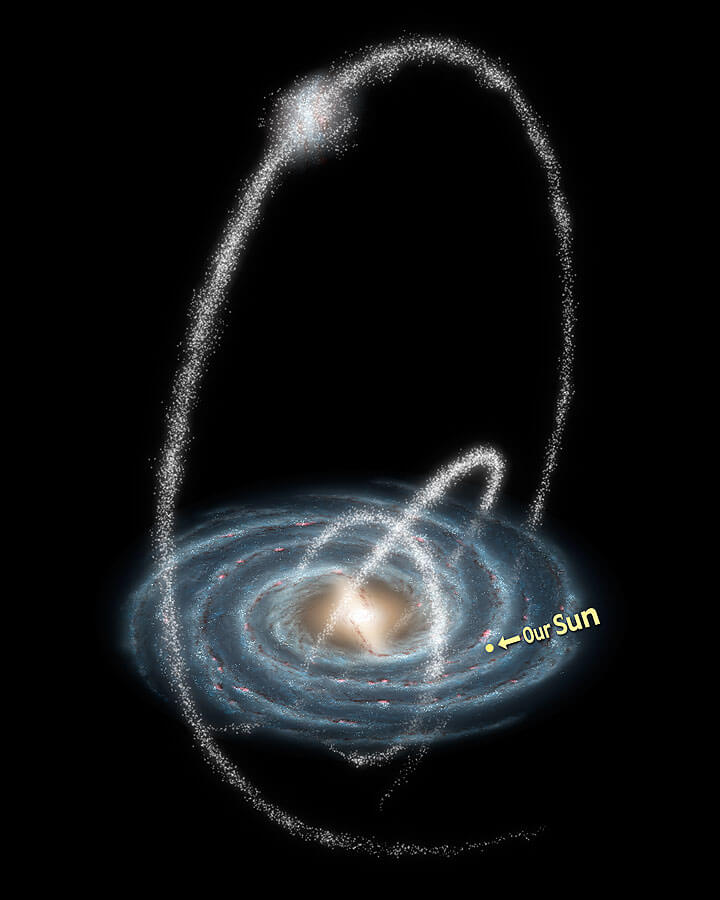
Messier 54, at the core of the Sagittarius dwarf elliptical galaxy. Credit: NASA/STScI/WikiSky
1,000,000,000 AD
Earth is becoming too hot to support liquid water
The seas and oceans are evaporating, as the Sun begins to get hotter and brighter. The Earth's atmosphere has become laden with water vapour, creating an intense greenhouse effect. Mars is actually becoming more habitable during this time.
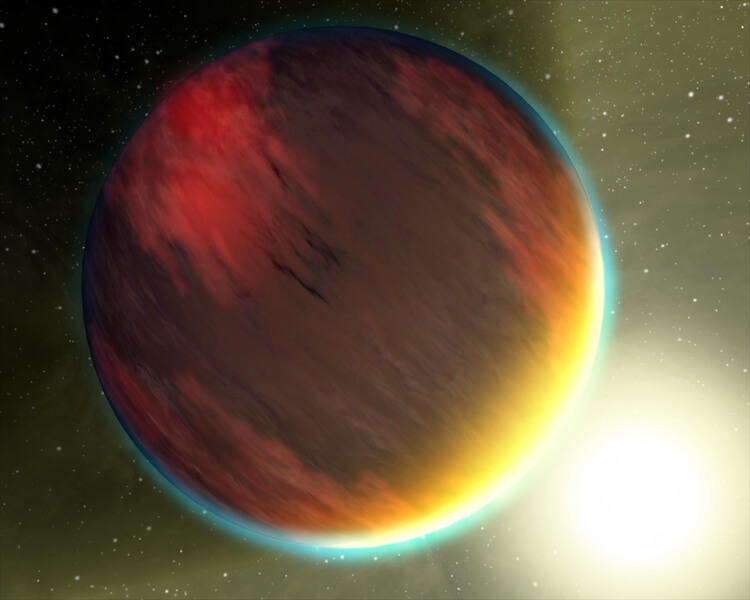
Credit: NASA/JPL-Caltech
3,000,000,000 AD
The Andromeda Galaxy has begun to collide and merge with our own
Milky Way galaxy**
Stars and planets within each galaxy are unlikely to actually collide, as galaxies are in fact somewhat diffuse.
Such mergers are relatively common; Andromeda, for example, is believed to have collided with at least one other galaxy in the past.
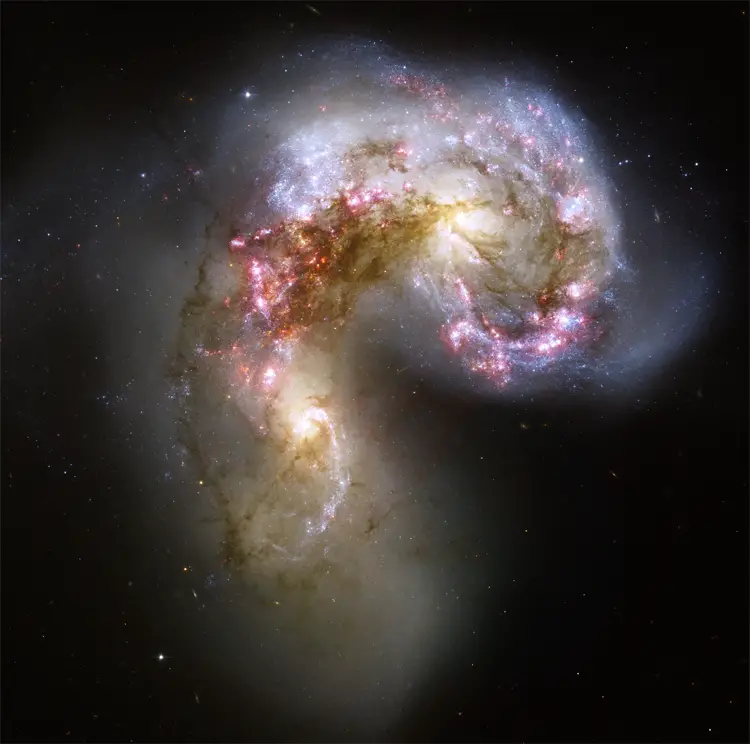
Credit: NASA, ESA, and the Hubble Heritage Team (STScI/AURA)-ESA/Hubble Collaboration
5,000,000,000 AD
Sol is a red giant
The inner planets of the solar system have been destroyed and absorbed by the ballooning Sun. Its radius has now expanded by over 200 times.
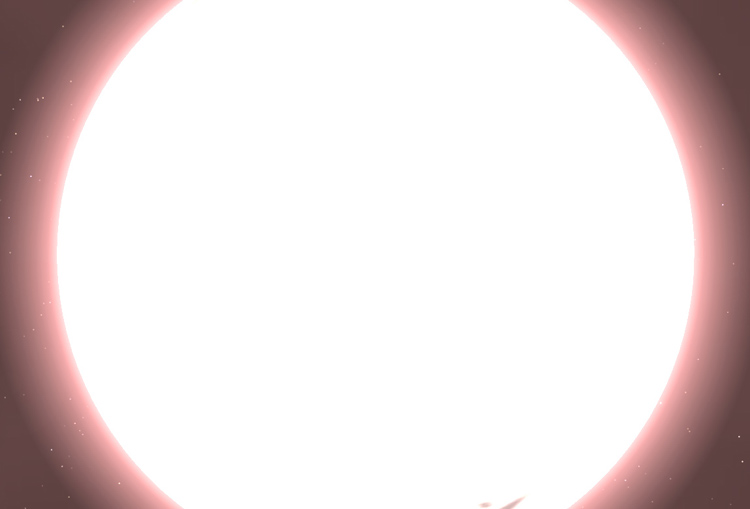
12,000,000,000 AD
Sol is shrinking to become a black dwarf
Most of the Sun's mass has been ejected, forming a planetary nebula. Having ended its main sequence life, it now begins to cool and dim - changing from a dense white dwarf into a cold, inactive black dwarf.
100,000,000,000 AD
The Virgo Supercluster is converging into a single galaxy
The Virgo Supercluster - containing hundreds of smaller clusters including our own - is now so ancient that it has begun to stabilise and converge into a single huge galaxy, many millions of light years across.
Other superclusters are also converging, but are now separated from each other by billions of light years due to the acceleration of dark energy.
Credit: Bell State University
1,000,000,000,000 AD
Star formation is declining in many galaxies*
By now, a significant percentage of galaxies throughout the universe are beginning to "burn out", having been depleted of the gas clouds needed to form stars.
2,000,000,000,000 AD
Galaxies beyond the Local Supercluster are no longer visible*
Dark energy has continued to drive the expansion of the universe at an ever-accelerating rate. By now, the volume of the universe is so great - and the speed of acceleration so high - that everything beyond the Local Supercluster is no longer visible.
Even for the highest energy gamma rays, a redshift of 1053 means their wavelength is stretched to greater than the physical diameter of the horizon.
Because of this, any remaining intelligent life today may no longer be able to obtain new empirical data on the state of large-scale structures on scales observed in the past.
20,000,000,000,000 AD
Red dwarf stars are dying*
By now, even some of the longest-lived stars in our galaxy - such as red dwarfs - have begun to fade away, leaving behind only cold "black dwarfs" emitting trace amounts of radiation. This includes once famous stars such as Proxima Centauri, Barnard's Star and Wolf 359. The Milky Way galaxy is becoming a dark, empty place dominated by enormous blackholes.
100,000,000,000,000 AD
The end of the stellar era*
The last of the main sequence stars in our universe has withered away to nothing. The only stellar-mass objects now remaining are white dwarfs, neutron stars and black holes. Brown dwarfs also remain.
Planets everywhere have been dislodged from their previous orbits and left drifting as "rogues", with many ending up in black holes.
10,000,000,000,000,000,000,000,000,000,000,000,000 AD
The degenerate era of the universe*
In this era, practically the only energy being generated in the universe is through proton decay and particle annihilation. The only remaining objects are neutron stars, white dwarfs and black holes. Due to extreme age, all of the planets and moons have disintegrated and decayed into their constituent atomic particles - or else been absorbed into stellar remnants.
10,000,000,000,000,000,000,000,000,000,000,000,000,
000,000,000,000,000,000,000,000,000,000,000,000,000,000,000,000,000,000,000,000,000 AD
The black hole era of the universe*
Only black holes and subatomic particles remain. The universe has expanded so much that these individual particles may be separated from each other by truly enormous distances. Black holes themselves are now evaporating by Hawking radiation.
Beyond 10100
The dark era of the universe*
The last remaining black hole has evaporated.
From this point onwards the universe is composed only of photons, neutrinos, electrons and positrons - with no way of interacting with each other.
The universe continues to expand forever... but is essentially dead.


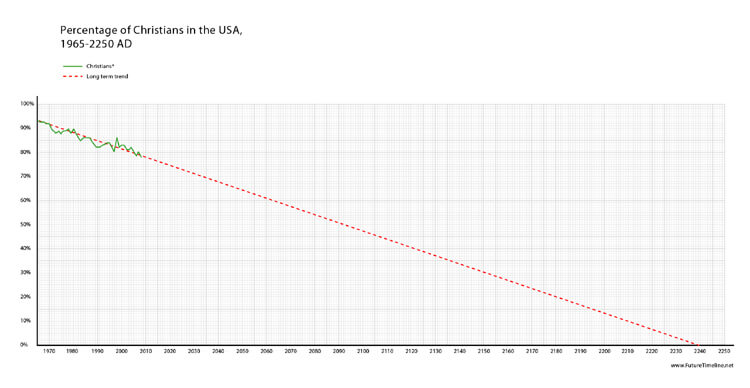

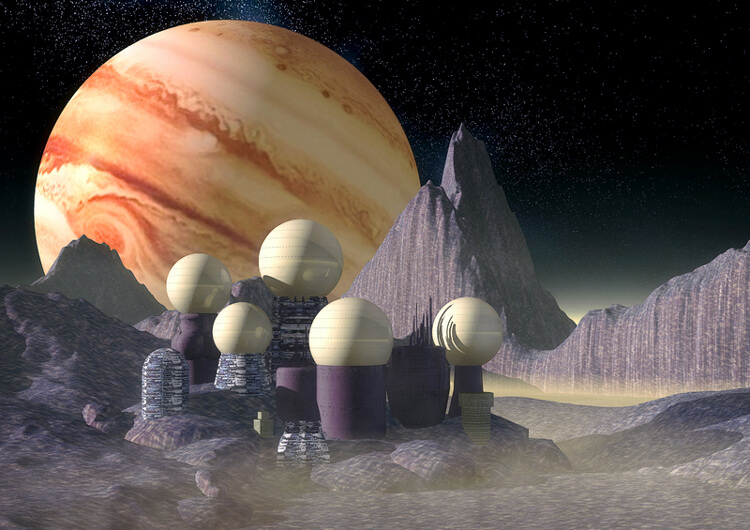
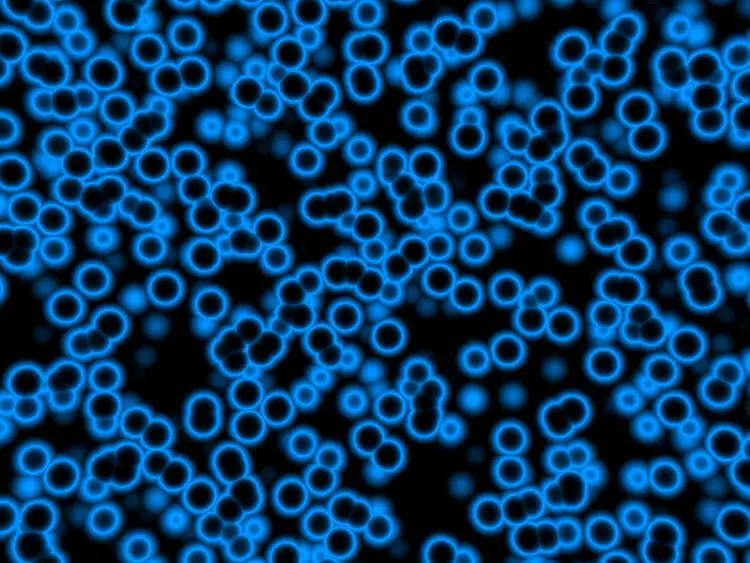
Niciun comentariu:
Trimiteți un comentariu